The Fliiiight is a different kind of trainer on so many levels. First off – it doesn’t use any sort of traditional trainer resistance technology to provide resistance. Instead, it recreates gradients and wattage levels by moving magnets, which depending on how close they are to your metal wheel rim will increase or decrease the amount of work you have to put in. The primary benefit of this concept is that it creates exactly zero sound. At least the trainer itself anyway. Your bike’s drive train will still create sound depending on how clean you have it (or how good your mechanic/parts are).
This design isn’t new though. This past spring, 4iiii bought STAC, which previously made the STAC Zero trainer. That trainer had the same technology foundations, but lacked style (it was traffic cone orange) and was finicky to set up. You had to deal with alignment issues as well as installing these weights on your wheels. But once you got it all set up, it worked just fine. The new Fliiiight gets rid of the weights, as well as the alignment issues. Now it has this crazy cool robotic alignment system. Frankly, I could create and play GIF’s of it all day long.
However, beyond all the tech bits – this trainer is different in its target market. While not clear from 4iiii at launch (or even till I finally started testing it) – it was designed for a rider that could put out less. Power that is. Simply put – this trainer isn’t for most people at the front of the pack. Nor for many people in the middle of the pack. I’ll get into all that below – but 4iiii now says that this trainer is designed for someone with an FTP of about 200w – and I’d agree with that (though, with some more caveats that I’ll get into).
But before we get into all those details (and trust me, there are many details) – note that 4iiii sent me this media loaner sample to test. Once I’m done with it here for testing I’ll sort out how to get it back to them in Canada. Just the way I roll. If you found this review useful, feel free to hit up the links at the bottom to help support the site – I appreciate it!
What’s in the box:
You’d easily mistake the 4iiii Fliiiight box for someone who managed to order a double-stack pizza. It’s actually almost identical to two pizza boxes stacked together. It’s amazing.
Slide off the sleeve, and crack open the top – also, pizza box style.
Inside you’ll find a sticker that’s your quick-start guide. It literally is as simple as this sticker implies.
Open up the stickered level, and you’ll see the trainer just chillin’ there:
And then here’s everything laid out for its maiden unboxing photo:
There’s only a few parts inside, as seen below:
A) USB-C cable with nifty magnetic attachment thingy
B) Three spoke clasps (you only need one)
C) A trainer skewer
Here’s a closer a closer look at that:
Those spoke clasps are used by the optical sensor on the trainer to detect your wheel speed. You simply just slide it around one of your spokes and you’re good to go. Just like giving your spoke a hug.
And that’s it. No wheel weights here, nor anything else. Oddly, not even a USB wall outlet adapter. Though you can use any USB adapter port you have sitting around your house. The trainer has a battery in it, which is claimed for 2 hours of usage. In my testing though I just ran it plugged in all the time to an older iPhone wall adapter. The way USB works it doesn’t matter what you plug it into.
The Basics:
So now that we’ve got it unboxed, we’ll get it setup. Which is equally as simple. First, unfold the legs and stand the trainer up:
Next, unfold the rear arms. Its’ technically a two-level origami unfolding process. It takes approximately 3.8 seconds. Any slower, and you need to do some more reps to get your form down:
After that go ahead and stock the spoke hugger on your favorite spoke. It doesn’t matter which spoke, but just arrange it so that it’s closer to the outer edge of the wheel.
And finally, mount your bike using either your existing metal skewer or the included one. If you have a plastic skewer on your bike from your wheel, swap it out. Don’t worry, you can use the metal one for regular riding as well.
Now’s a good time to mention that you do indeed need a wheel rim with metal in it. If you’ve got yourself a fancy carbon wheelset, that won’t do here. The magnets need the metal to interact with.
Oh – and even better is that you don’t even need to keep your tires pumped up, like this:
You’ll want to ensure the bike is nice and snug. The entire robotic moving arm system works best when there’s no sway of the bike itself, as it’s already having to deal with the fact that your wheel isn’t true from the like 28 times you tried to jump the curb and failed.
Finally, go ahead and plug it in to ensure it’s charged up. The trainer has a USB-C port on it, that charges its internal 2hr battery. But what’s cool is that 4iiii included a set of these tiny little magnetic USB-C breakaway adapters (you can actually buy them here). This means if you trip over the cable it won’t rip away from your trainer. You know, like Apple used to have on their MacBook’s before we all had to move to 4 ports filled with dongle adapters.
I’d love to see more and more trainer companies shift to USB-C for standardized power delivery. If only because it’ll make my life easier having to keep track of which power plug is for which trainer. Most trainers don’t actually need that much power, and some of them even generate their own power. Obviously they’ll require more power than this lowly USB adapter below (such as a laptop charger) – but heck, at least there would be a standard.
If you haven’t turned on the power switch by now, it’s a good time to do so:
You’ll notice that as soon as you either power it on, or spin the wheel and stop pedaling the robotic arms will go to town. They’ll close up on the wheel and then release. This is the automatic calibration feature. Yup, that’s it – your trainer is now calibrated.
What’s really cool about this is that it not only aligns itself across the entire horizontal length of the back of the trainer (in case you didn’t put your bike in centered), but also figures out your exact wheel width and position too. Seriously, just click play and watch the entire sequence – including the normal riding sound it makes towards the end:

Now let’s start pedaling for realz. You’ll notice as you pedal that the little robotic arms are constantly swaying in and out. This is because your wheel likely isn’t true (perfectly even). It’s using that spoke magnet to measure your wheel speed in real-time, and then countering for the variations in your pedal stroke in real-time as well. It’s almost as fascinating to watch as the calibration sequence.
As you request more power from the system (such as going from 150w to 300w), the arms will move closer and closer to your wheel rim, providing more resistance. The idea being that they never touch, else that’ll make some noise (but is otherwise harmless).
And remember that little spoke condom? That’s actually passing by these optical sensors right here. The white helps the sensor see it clearly compared to your spokes:
Now given the Fliiiight is a smart trainer, it’ll change resistance automatically in a few different ways, primarily driven by different applications/methods. But most of this all boils down to two core methods:
ERG Mode: Setting a specific power level – i.e., 185w. In this mode, no matter what gearing you use, the trainer will simply stay at 185w (or whatever you set it to).
Simulation Mode: Simulating a specific outdoor grade – i.e., 6% incline. In this mode, it’s just like outdoors in that you can change your gearing to make it easier or harder. Wattage is not hard-set, only incline levels.
In the case of simulation (aka slope) mode, the Fliiiight can simulate from 0% to 7% incline – which is below the competitors in this price point. The Elite Tuo goes to 10%, the Saris M2 to 15%, the Wahoo KICKR SNAP simulates up to 12%. Keep in mind that by default on Zwift your gradient is halved (this doesn’t impact your speed or power required, just gearing). While I always use it at 100%, here’s what that setting shows by default at 50%:
This means that by default a 10% gradient becomes a 5% gradient unless you change it to 100%. Which in the case of the Fliiiight is probably a good thing, given its relatively low ability to replicate grades.
The second mode the trainer has is ERG mode. In that case, the company claims up to 2,200w – but there’s no way in hell it’ll ever hit that unless you’re doing like 900RPM. This is very low in the smart trainer world, even for a $500 smart trainer. And this probably gets to the core ‘challenge’ with the Fliiiight: It’s essentially designed for riders with an FTP up to about 200w. FTP is essentially how much wattage you can hold for approximately an hour. So if you can hold 200w for an hour, your FTP is 200w. If you can hold 285w for an hour, your FTP is 285w. There are various ways to test this that don’t require you pedal balls to the wall for an hour, just lookup FTP test or RAMP test.
In any case, let’s step through each of these very Fliiiight specific aspects one at a time. First being ERG mode responsiveness. Here’s my standard 30×30 test using TrainerRoad, which shifts between recovery at about 150w, and then intervals at about 420w. Repeating every 30 seconds. For this test I’m looking to see how quickly a trainer responds, as well as how well it holds the set point. We’ll get into the actual power accuracy portions (comparative to other units) in a later section. First tough, responsiveness:
So you can see for the first set above, it was really low. Huh.
Turns out my cadence was around 85RPM. A bit lower than my usual 90’s or so, but hardly an issue on any smart trainer I use. As such, the trainer wasn’t able to supply the required power – short by some 50-70 watts, since my wheel speed wasn’t fast enough. You can see that as I brought up my cadence into the upper 90’s the Fliiiight was able to provide the power just fine.
As such, for the next set I kept my cadence above 100RPM, and the trainer matched the required/requested ERG mode set point of 428w just fine (give or take a few watts, as is normal for most trainers):
I eventually found that for these sets I could get away with approx. 98RPM. Any lower and it wouldn’t hold resistance.
Why does this matter?
Well, if you wanted to do low-cadence drills you couldn’t do so – at least at these wattages. If you had a target of say, 300w, then sure, there’s no issues there. That’s where we get into the FTP bit of 200w. The trainer, as you can see, can certainly put out more than 200w just fine. But if you’re doing training sessions, then you’ll undoubtedly have parts of a structured workout that are higher than 200w. That’s how you get stronger. If you just train below FTP, it’s unlikely you’ll make meaningful training gains.
Now – I circled back to 4iiii on this to see if the challenges I had with cadence and getting more power were expected. Essentially they said they were. However, they also gave an option to tweak the distance buffer between the magnets on the arm and my wheel. Remember that controls how much power the trainer can respond with. Normally they have a bit of a margin of error to handle less than true wheels so they don’t rub. But one could reduce that margin through settings, and that’d, in turn, give you more resistance.
So I did that (it’s a feature of their upcoming Android app, but 4iiii Support has a website you can change it from as well). It allowed me to set the Motion Limit in closer. By the time this releases to the public it’ll be much prettier and probably have normal human terms. But to test the concept out, it worked just fine.
I then tried TrainerRoad 30×30’s again. Good deal – much better in terms of top-end power. I was able to do the first set at 77RPM and it was coming in at 450w. Granted, the power was a bit higher than the set point, but I wasn’t super even in my stroke since I hadn’t entirely expected it to actually match me at 450w for 77RPM. I then did a second interval, this one in the mid 80’s, and it was still able to hold the power just fine.
So ok – ERG mode is fine within that context of holding power, assuming you’re riding in the fastest possible gearing combination (big ring in front, smaller rings in back). Unlike other trainers in ERG mode, the 4iiii is the opposite. It *wants* wheel speed. The faster the better. All other trainers are the opposite (slower flywheel speed is more responsive/accurate). The downside though is that with this change the road-feel got worse. Substantially worse. Like pedaling through mud. But, at lower wattages (I also tried the mid-200’s and low 300’s), it was better.
What about SIM mode – meaning, regular Zwift riding? Well, in a nutshell it’s the same, except even worse. Way worse.
See, unlike in ERG mode where you can just put your bike in the fastest possible speed and it’ll be acceptable, you can’t do that in Zwift (or other road simulation type apps). You need to shift to deal with changes in terrain, or to catch-up to a breakaway in a sprint. So what ends up happening is you run out of gears to get the resistance you need, be it on the flats or even during climbs (with the default settings) – but more than anything else also on descents.
Take the above screenshot for example – that’s as much power as the trainer would allow me to do – and that’s at a cadence of 100pm down a mere 2%.
On the flats, here’s me trying to sprint:
Note that I’m in my hardest gear and the unit is only giving me 420w of resistance – at a pretty darn high 125RM.
The same was true trying to go through Titan’s Grove with the rollers. I simply couldn’t get it to give me the power I needed without having to hold a cadence of about 100+RPM throughout the entire thing (my natural cadence is more around 90-95RPM). For example this bit here I snapped a shot at 76RPM, but even up this 7% grade it could only do 158w. My legs at 76RPM should easily have been pushing 300+ watts in here in my hardest gear:
Now I get it – I’m a more powerful ride than many. But not that many. My numbers are hardly epic. My sprints top out around 900-1,000w, and my FTP floats in the 285-295w range. So again, if you’re a less powerful rider, this would technically probably work just fine for you. For example, my wife could ride this trainer just fine from a power standpoint, her wattage isn’t above 4iiii’s thresholds.
Now – there were certainly times where I found just the right balancing of gearing and gradient that I was in a good spot. But on a rolling course like this it was few and far between.
But wait – what if I applied the 4iiii buffer app tweaks like I did for TrainerRoad? Would that help? Yes, somewhat. I was able to fairly easily hit the mid-250’s at only 65RPM. And, with all of my juices flowing I spun up to 140RPM and the trainer topped out at 716w. I suspect I could get it higher still.
However, that gets into road feel a bit. In other words, how does inertia feel – do the accelerations feel like riding on the road? With the original STAC Zero trainer they added wheel weights to help with inertia. Sure, they were finicky to setup, but if you got them nailed – it was good. Not $1,200 Wahoo KICKR great, but good enough good. But the Fliiiight doesn’t have weights, instead trying to do it all with magnets.
And for at least my non-perfect wheel – it’s just not a great feeling outside of ERG mode (ERG mode is mostly acceptable, but not great). Now perhaps my wheel is super abnormal, but I suspect not. In fact, this metal wheel has only a handful of miles on it. I virtually never ride it since it came with one of my bikes and I virtually always ride other wheelsets I have with PowerTap hubs in them for power meter testing. So it’s not like this wheel has thousands of miles on it. My bet is that it has at most a few hundred miles, maybe even just a few dozen miles.
I wish I had a better story here, but ultimately I think that in 2019 going on 2020, the magnetic driven technology might be too little too late to compete with other trainers at this price point. Had they had this technology 4-5 years ago at this price point – absolutely. Trainers were different then. But these days with the KICKR SNAP and others at $499 with mostly good road feel (and zero of the power limitations above), it’s a hard sell.
Though, to be fair – the 4iiiii Fliiiight is certainly far quieter than anything else in this price point (by miles), and from a power accuracy standpoint (as I’ll discuss), it’s far more accurate than any other trainer in this price point (or even other trainers at double its price). It nails those two categories, but like Captain Kirk: Scotty, I need more power!!!
App Compatibility:
When it comes to app compatibility, the 4iiii Fliiiight follows the industry norms as you’d expect from a smart trainer in 2019. As you probably know, apps like Zwift, TrainerRoad, Sufferfest, Rouvy, Kinomap and many more, all support most of these industry standards, making it easy to use whatever app you’d like. If trainers or apps don’t support these standards, then it makes it far more difficult for you as the end user.
The unit supports the following protocols and transmission standards:
ANT+ FE-C (Trainer Control): This is for controlling the trainer via ANT+ from apps and head units (with cadence/power data). Read tons about it here.
ANT+ Power Meter Profile: This broadcasts as a standard ANT+ power meter, with cadence data
Bluetooth Smart FTMS (Trainer Control): This is for controlling the trainer over Bluetooth Smart from a variety of apps.
Bluetooth Smart Power Meter Profile: This broadcasts as a standard BLE power meter, with cadence data
In the above, you’ll note there’s cadence data baked into the various streams. That’s handy if you’re connecting to Zwift on an Apple TV, due to Apple TV’s two concurrent Bluetooth Smart sensor limitation (plus the Apple TV remote). This means you can pair the trainer and get power/cadence/control, while also pairing up a heart rate strap.
In my case, I largely tested with Zwift and TrainerRoad – simply because those are the two biggest apps out there today. Within that framework, I did both regular riding in Zwift, as well as ERG workouts in TrainerRoad. If you do structured workouts in Zwift, then those are identical to TrainerRoad, leveraging ERG mode.
Starting with TrainerRoad, you’d go ahead into the Devices area and find the Fliiiight listed:
I went ahead and disabled PowerMatch, because for testing reasons I want to know it’s thinking for itself and not relying on another power meter.
Now somewhat interestingly TrainerRoad still shows their boilerplate text for the Fliiiight upon pairing, which is actually incorrect. In this case, we need to do the opposite of what it says (go with a big gear and go fast):
Next, I loaded up my usual 30×30 trainer test. This is something I end up running on virtually all trainers as a great way to validate ERG mode responsiveness. It starts off with a short two-minute ramp, and then it oscillates power at 30-second intervals between a low wattage (about 150w on this day), and a high wattage (~430w). You can run this same workout yourself here.
Obviously we’ve talked about the results of that already up above, so no need to rehash that.
Next, let’s look at Zwift. Here things are pretty darn similar. You’ll start off by pairing to the Fliiiight trainer within the equipment menu:
After that, you’re off and cruising in Zwift. Of course, in regular (non-workout) mode, Zwift is transmitting the grade to the Fliiiight, which in turn automatically adjusts the grade on the trainer:
And again, I’ve discussed how this all works up above in the ‘Basics’ section in terms of road feel and such.
Finally, 4iiii has their own app for some configuration bits of the Fliiiight trainer, including firmware updates. This app is available on iOS today and shortly on Android (but they have a support website that gets you the other functions in the meantime – in fact, even some additional features not on iOS, so fear not Android folks). From the app you can go ahead and check the battery status as well as update the firmware:
You can also do a ‘calibrate’-like command (it’s just recentering the arms), as well as dork with some other settings you probably shouldn’t touch. And finally, you can also control the trainer in either ERG or resistance level, handy for super quick testing.
All of this worked just fine for me, as well as did connectivity. I didn’t experience any Fliiiight specific dropouts, largely using Bluetooth Smart to both Apple TV and an iPad (and both an Android phone and iOS phone for configuration).
Power Accuracy:
As usual, I put the trainer up against a number of power meters to see how well it handled everything from resistance control accuracy, to speed of change, to any other weird quirks along the way.
In my case I used two different bikes set up in the following configurations:
Canyon Bike Setup: Favero Assioma Duo power meter pedals, Quarq DZero
Giant Bike Setup: Garmin Vector 3 dual-sided power meter pedals, Stages LR dual-sided crankset
This is all in addition to the trainer itself recording power. While I have PowerTap hubs for rear wheelset, all of those are laced into carbon-rimmed wheels, which aren’t compatible with the Fliiiight.
In any case, I was looking to see how it reacted accuracy-wise in two core apps: Zwift and TrainerRoad (Bluetooth Smart on Apple TV and iPad). The actual apps don’t typically much matter, but rather the use cases are different. In Zwift you get variability by having the road incline change and by being able to instantly sprint. This reaction time and accuracy are both tested here. Whereas in TrainerRoad I’m looking at its ability to hold a specific wattage very precisely, and to then change wattages instantly in a repeatable way. There’s no better test of that than 30×30 repeats (30-seconds at a high resistance, followed by 30-seconds at an easy resistance).
There’s two ways to look at this. First is how quickly it responds to the commands of the application. So for that, we need to actually look at the overlay from TrainerRoad showing when it sent the command followed by when the Fliiiight achieved that level. Here’s the levels being sent (the blue blocks via the green line) by TrainerRoad (in this case via Bluetooth Smart on iPad) and how quickly the Fliiiight responds to it:
On average, responsiveness time was actually OK. It took about 3 seconds once it received the command, to go from 150w to 428w – which is perfectly acceptable and normal.
So what about power accuracy? In this case, I’ve compared it to a dual-sided set of Vector 3 power pedals, as well as a single-sided Stages LR. Technically it was dual-sided, but only when you remember to swap out the battery when it dies. So it was more of a Stages R, than LR. Either way, it gives us another data point, though I think the Vector 3 are good enough for telling this story. Here’s this data set:
As you can see, it’s pretty darn close. If we look at the 2nd interval where I stabilize a bit, you’ll see the wattages are within 5w of each other (at 440w) – or a spread of 1%, not too shabby. In theory, the Fliiiight should be the lowest value of the units here because it’s furthest down the drivetrain (for which there is still drivetrain loss), but in practice we see them all about the same value-wise this ride.
It’s also notable that we see the power floor isn’t impacted much here – it holds accuracy at lower wattages just fine:
And cadence you ask? Very close. Not exactly the same between all three – but within 1-2RPM of measurement across the entire range.
And for fun, here’s the mean/max graph on that ride. You’ll see that the Fliiiight is slightly lower than the other units, exactly as it should be.
Next, let’s slide over to Zwift. This file is from the Titan’s Grove course where I’ve been testing all trainers this season. I use this course because it allows me to do some high flywheel speed stuff early on with the desert bits on the flats, and then I climb up over a series of rollers and climbs before descending a bit. It’s very demanding of trainers, but covers a broad range of terrain. Here’s that data set:
Accuracy wise that’s actually really really good. The three units are virtually identical. There’s a disconnect or two in here on both the Stages and briefly on the Fliiight side, so likely indicative of some wireless interference, but power wise these three are virtually identical when viewed at the full-ride level. We see this impact the mean/max graph later since one of the data dropouts was 18-seconds long during a harder effort.
So obviously, let’s zoom in on some sections – starting off with some early sprint attempts:
Accuracy-wise though the power is very very close during the ramp and build. The Vector 3 measures slightly higher, and the Stages R is closer to the 4iiii Fliiight (but that’s doing only single-leg power capture at that point on the Stages).
Normally I do these sprints at about 900w. But as you can see, I topped out at roughly 500w. That’s as much resistance as the trainer would give me when I put it in the hardest gear possible on my bike. In fact, if you look below at my cadence, you’ll see that I was spinning at 129RPM in order to get those 500w.
I repeated some sprints a bit later as well, but again it required me clearing nearly 130RPM in order to get the power above 500w:
Now as you can see throughout other parts of the ride, the accuracy is actually really good. It’s very very close together as I swing through these rollers climbing up at 350w+:
And finally, here’s a look at the cadence on this ride. Again, you can clearly see I’m struggling across all devices with WiFi interference and occasional drops:
But from a cadence standpoint, all the units were almost always within 1RPM of each other, and occasionally up to 2RPM. More than good enough than even most higher end trainers this year.
Ultimately – from a straight power and cadence accuracy standpoint the Fliiiight is actually really good. That matches what we saw with the STAC Zero too. While the trainer may not be able to output a lot of power, it’s able to track that power very accurately across a broad range of riding scenarios in multiple apps. Good on them.
(Note: All of the charts in these accuracy sections were created using the DCR Analyzer tool. It allows you to compare power meters/trainers, heart rate, cadence, speed/pace, GPS tracks and plenty more. You can use it as well for your own gadget comparisons, more details here.)
Product Comparison:
I’ve added the 4iiii Fliiiight into the product comparison database, where you can compare it to any trainer that I’ve reviewed or have in the DCR Cave. For the purposes of below, I’ve slated it up against the Elite Tuo, Wahoo KICKR SNAP and CycleOps M2 – which I think are fair comparisons. All those units are $499 and wheel-on trainers, and the Fliiiight is $499 right now on sale. Of course, you can mix and match and create your own product comparison chart in the product comparison tables here. And of course, my complete Winter 2019-2020 Trainer Recommendations Guide as well.
| Function/Feature | 4iiii Fliiiight | Elite Tuo | Saris M2 | Wahoo KICKR SNAP (Current edition) |
|---|---|---|---|---|
| Copyright DC Rainmaker - Updated November 17th, 2024 @ 5:42 pm New Window | ||||
| Price for trainer | $599 | $580 | $499 | $499 |
| Trainer Type | Wheel-on | Wheel-on | Wheel-On | Wheel-on |
| Available today (for sale) | December 2019 | Yes | Yes | Yes |
| Availability regions | Global | Global | Global | Global |
| Wired or Wireless data transmission/control | Wireless | Wireless | Wireless | Wireless |
| Power cord required | No, 2hrs battery capability | Yes | Yes | Yes |
| Flywheel weight | N/A | 2.5kg / 5.5lbs | 2.6lbs/1.2kg | 10.5lbs/4.8KG | Resistance | 4iiii Fliiiight | Elite Tuo | Saris M2 | Wahoo KICKR SNAP (Current edition) |
| Can electronically control resistance (i.e. 200w) | Yes | Yes | Yes | Yes |
| Includes motor to drive speed (simulate downhill) | No | No | No | No |
| Maximum wattage capability | 2200w | 1,250 (40KPH)/2,050 (60KPH) | 1,500w @ 20MPH | 1,500W @ 40KPH |
| Maximum simulated hill incline | 7% | 10% | 15% | 12% | Features | 4iiii Fliiiight | Elite Tuo | Saris M2 | Wahoo KICKR SNAP (Current edition) |
| Ability to update unit firmware | Yes | Yes | Yes | Yes |
| Measures/Estimates Left/Right Power | No | No | No | No |
| Can directionally steer trainer (left/right) | No | No | No | No |
| Can simulate road patterns/shaking (i.e. cobblestones) | No | No | No | No | Motion | 4iiii Fliiiight | Elite Tuo | Saris M2 | Wahoo KICKR SNAP (Current edition) |
| Whole-bike physical gradient simulation | No | No | No | With KICKR CLIMB accessory |
| Can rock/tilt side to side (significantly) | No | No | No | No | Accuracy | 4iiii Fliiiight | Elite Tuo | Saris M2 | Wahoo KICKR SNAP (Current edition) |
| Includes temperature compensation | Yes | Yes | No | Yes |
| Support rolldown procedure (for wheel based) | N/A | Yes | Yes | Yes |
| Supported accuracy level | +/- 1% | +/- 5% | +/-5% | +/- 3% | Trainer Control | 4iiii Fliiiight | Elite Tuo | Saris M2 | Wahoo KICKR SNAP (Current edition) |
| Allows 3rd party trainer control | Yes | Yes | Yes | Yes |
| Supports ANT+ FE-C (Trainer Control Standard) | Yes | Yes | Yes | Yes |
| Supports Bluetooth Smart FTMS (Trainer Control Standard) | Yes | Yes | Yes | Yes | Data Broadcast | 4iiii Fliiiight | Elite Tuo | Saris M2 | Wahoo KICKR SNAP (Current edition) |
| Transmits power via ANT+ | Yes | Yes | Yes | Yes |
| Transmits power via Bluetooth Smart | Yes | YEs | Yes | Yes |
| Supports Multiple Concurrent Bluetooth connections | No, just one | No, just one | No, just one | |
| Transmits cadence data | Yes | Yes | Yes | No | Purchase | 4iiii Fliiiight | Elite Tuo | Saris M2 | Wahoo KICKR SNAP (Current edition) |
| Amazon | Link | Link | Link | Link |
| Backcountry.com | Link | Link | Link | |
| Competitive Cyclist | Link | Link | Link | |
| REI | Link | Link | Link | Link | DCRainmaker | 4iiii Fliiiight | Elite Tuo | Saris M2 | Wahoo KICKR SNAP (Current edition) |
| Review Link | Link | Link | Link | Link |
And again remember you can mix and match and create your own product comparison chart in the product comparison tables.
Summary:
At first glance the 4iiii Fliiiight is everything I wanted the STAC Zero to grow up to be. Prettier, less finicky, USB-C charging – even nifty robotic arms and optical lasers. How can it get better than robots? However, the end-product is a bit more tricky than I expected – primarily for more powerful riders.
If you’re a less powerful rider – then I think the Fliiight is definitely an very valid option, especially if they continue to offer it at $499. To me that price point makes sense given the other contenders in the market are at $499. And there’s no trainer that’s quieter than the Fliiiight. Nor seemingly any that’s actually more accurate. Really, from an accuracy standpoint this thing pretty much rivals a KICKR or NEO any day. No issues there.
The challenge though is for more powerful riders there’s just too many compromises to make. In discussions in early November, 4iiii stated a target market rider FTP of 200w. However, in later e-mails they specified a range of up to 250w. I think the 250w FTP is really only valid if you’re more of a triathlete doing largely steady-state workouts (and only with the magnetic buffer tweak). But even all that considered, the road inertia feel isn’t great. Sure, it’s not terribly different than the STAC Zero was – but trainers and price points have moved on. The trainers of this year, wonky manufacturing and power accuracy issues aside, are physically better and more realistic than trainers of two years ago – but now hundreds of dollars cheaper.
Ultimately you’ll have to decide if the tradeoffs of this trainer meet your specific requirements. For myself, it wouldn’t be an appropriate trainer. However, for someone like my wife who is far smaller and needs less of a wattage ceiling – she’d be able to train on this just fine. All while still being super quiet.
Found this review useful? Support the site!
Found This Post Useful? Support The Site!
Hopefully you found this review/post useful. At the end of the day, I’m an athlete just like you looking for the most detail possible on a new purchase – so my review is written from the standpoint of how I used the device. The reviews generally take a lot of hours to put together, so it’s a fair bit of work (and labor of love). As you probably noticed by looking below, I also take time to answer all the questions posted in the comments – and there’s quite a bit of detail in there as well.
If you're shopping for the 4iiii Fliiiight or any other accessory items, please consider using the affiliate links below! As an Amazon Associate I earn from qualifying purchases. It doesn’t cost you anything extra, but your purchases help support this website a lot.
And finally, here’s a handy list of trainer accessories that most folks getting a smart trainer for the first time might not have already:
And of course – you can always sign-up to be a DCR Supporter! That gets you an ad-free DCR, access to the DCR Quarantine Corner video series packed with behind the scenes tidbits...and it also makes you awesome. And being awesome is what it’s all about!
Thanks for reading! And as always, feel free to post comments or questions in the comments section below, I’ll be happy to try and answer them as quickly as possible. And lastly, if you felt this review was useful – I always appreciate feedback in the comments below. Thanks!


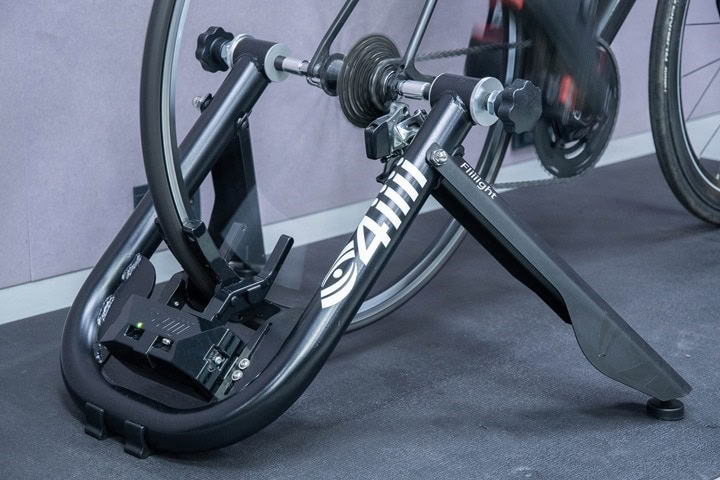

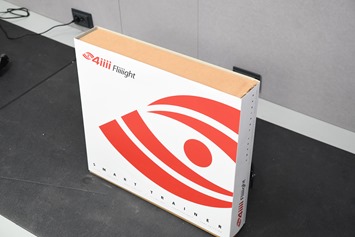
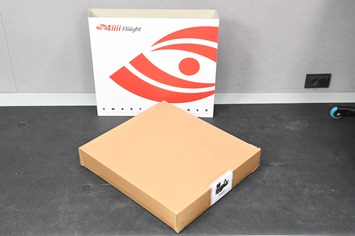
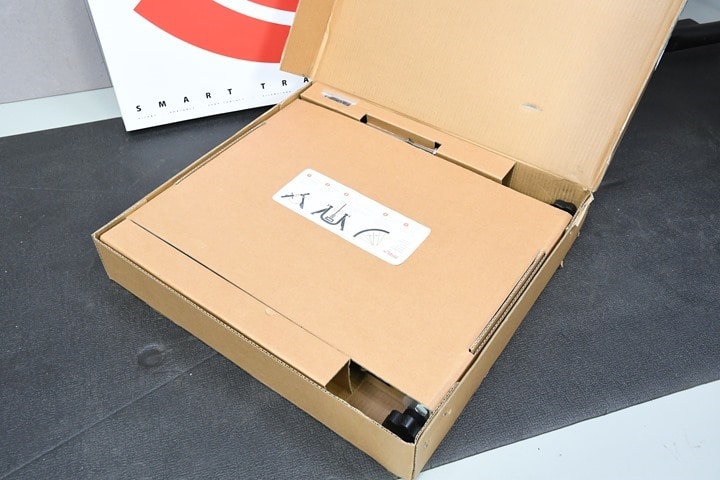
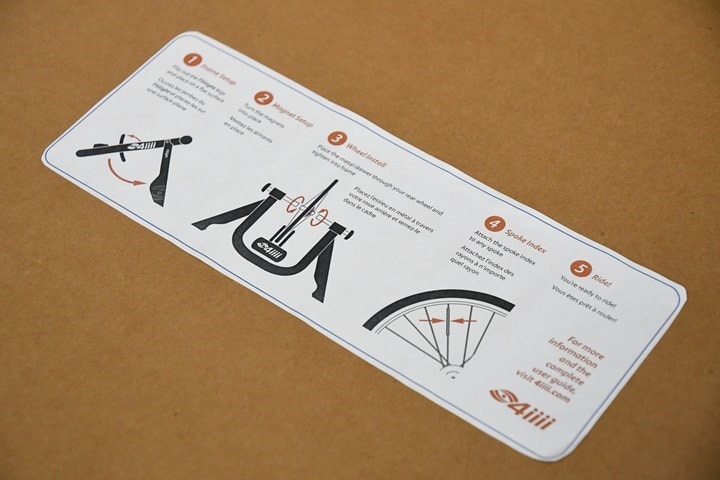
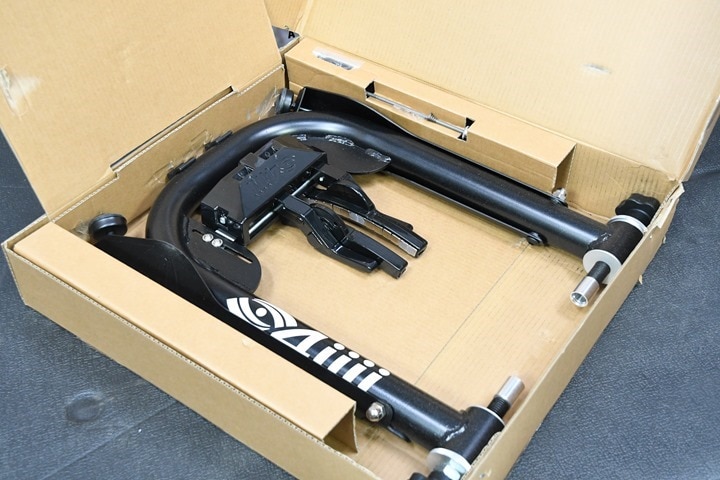

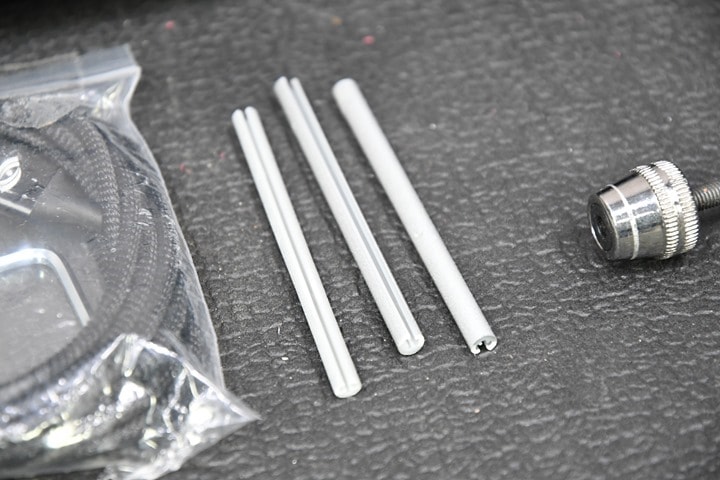
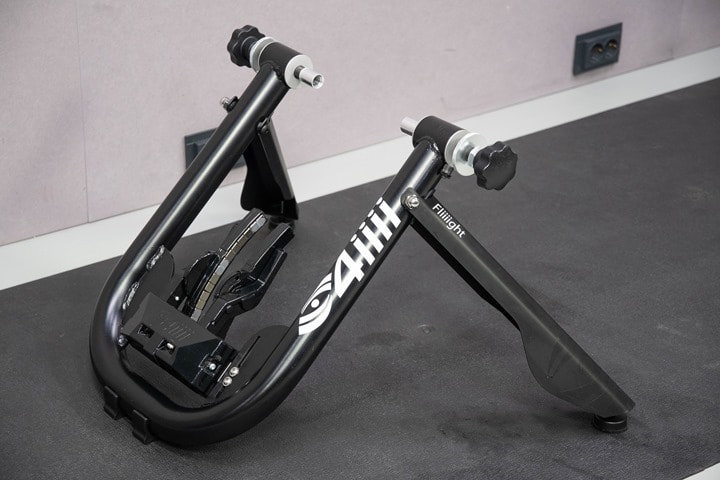
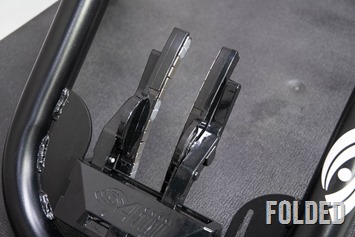
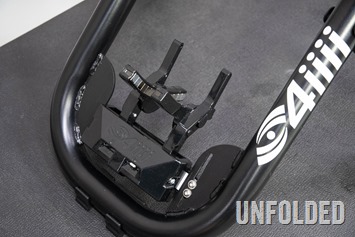
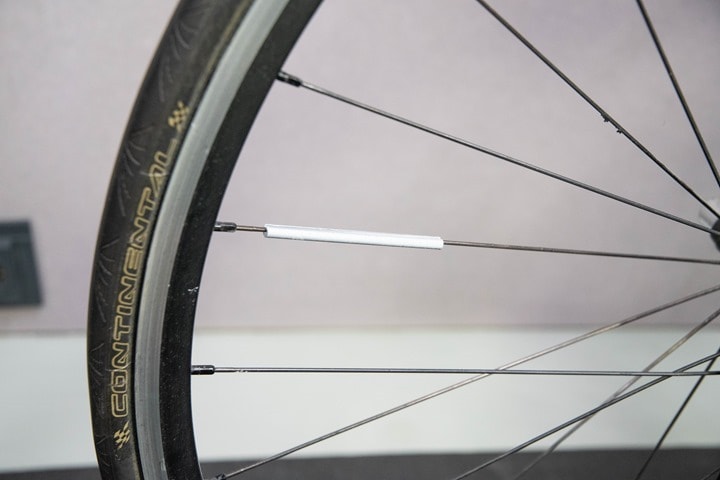
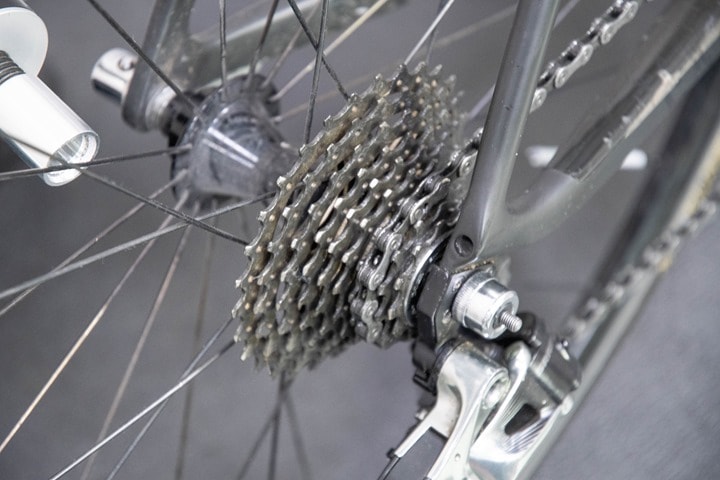




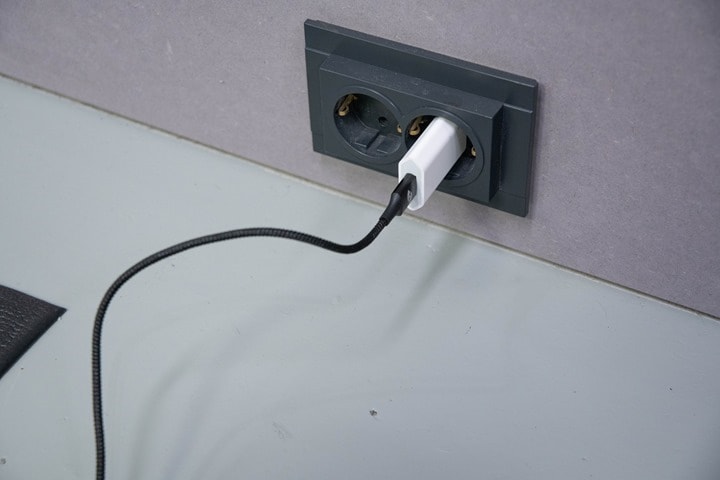
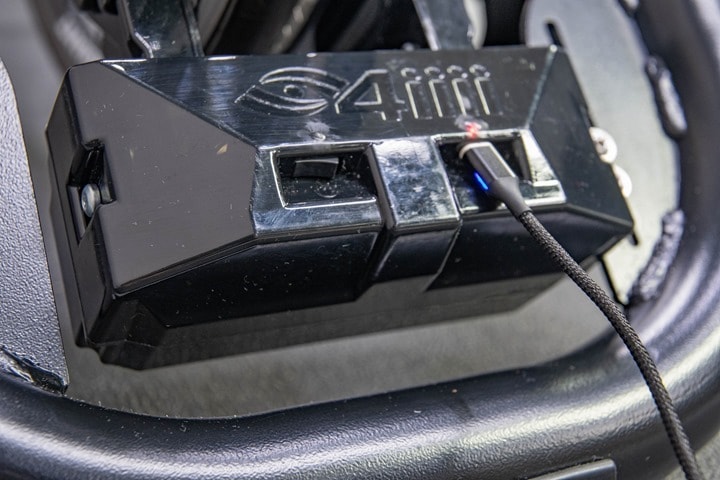
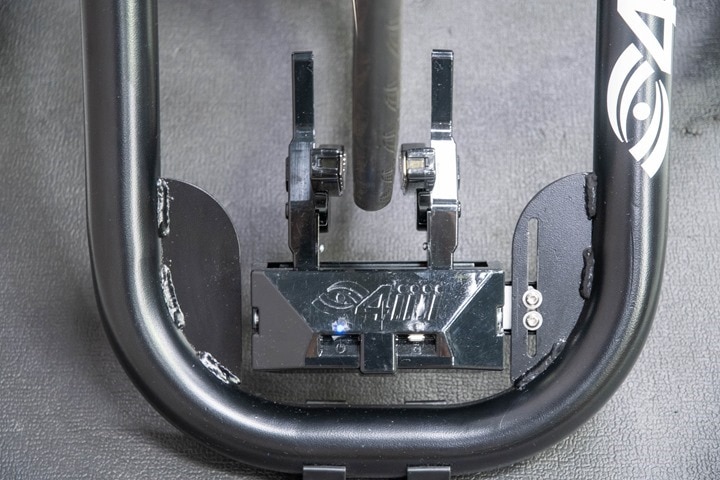
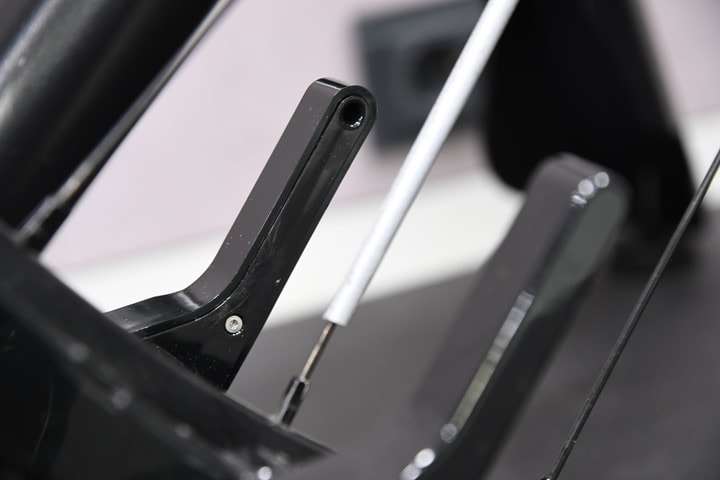
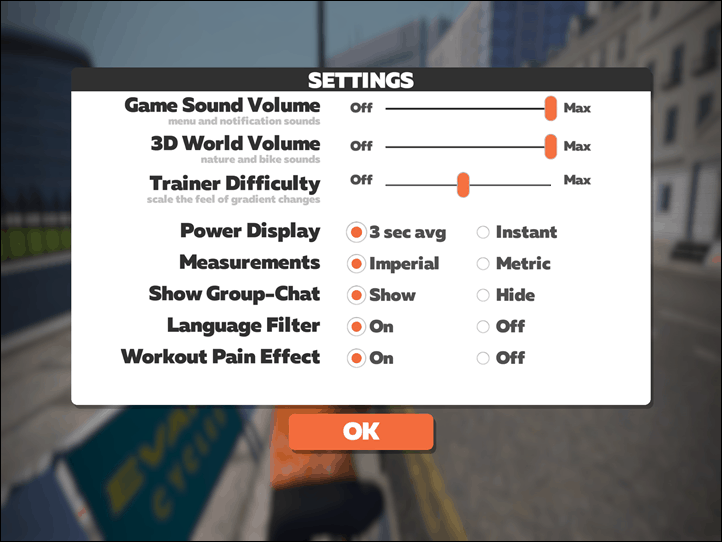






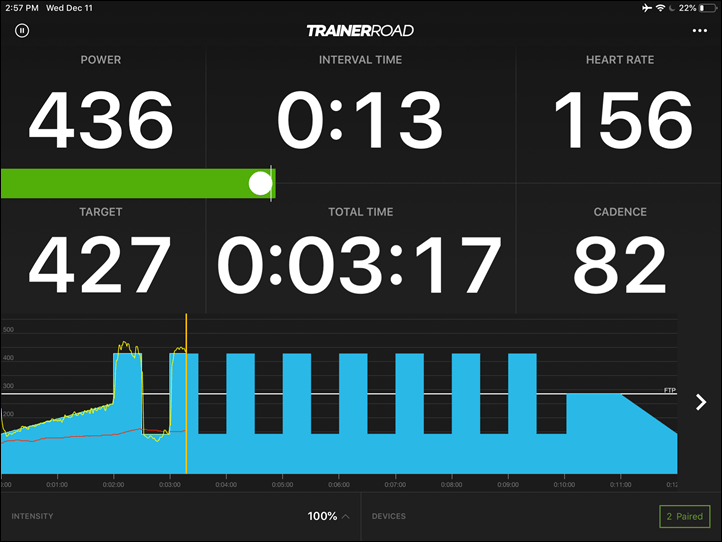
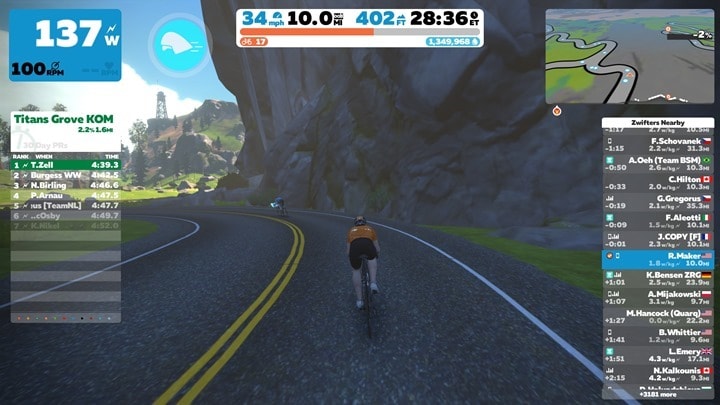
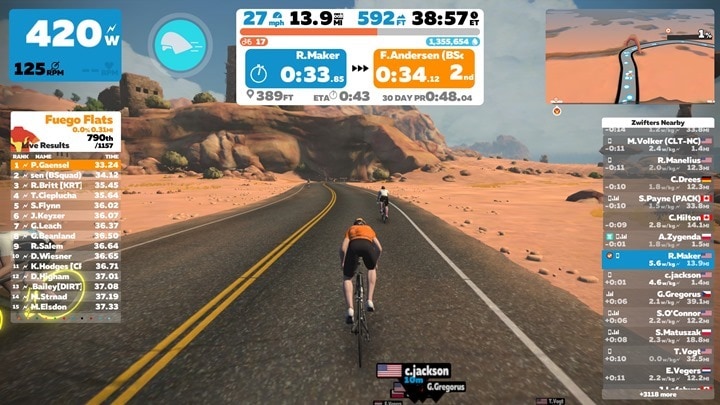
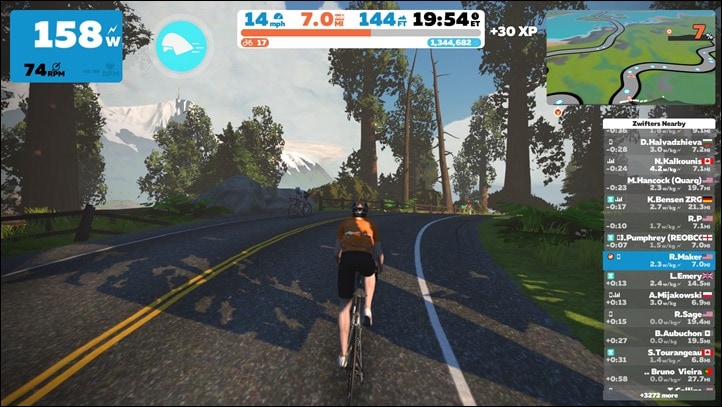
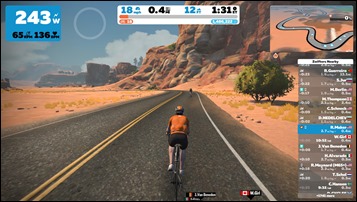
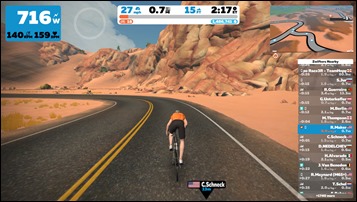
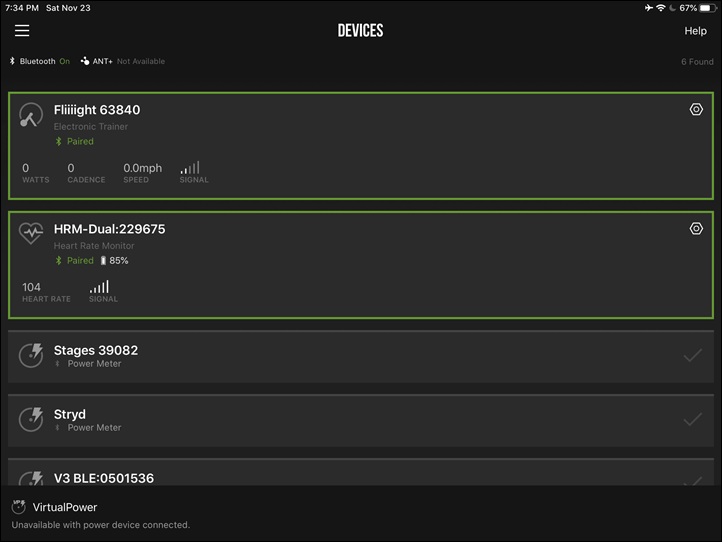
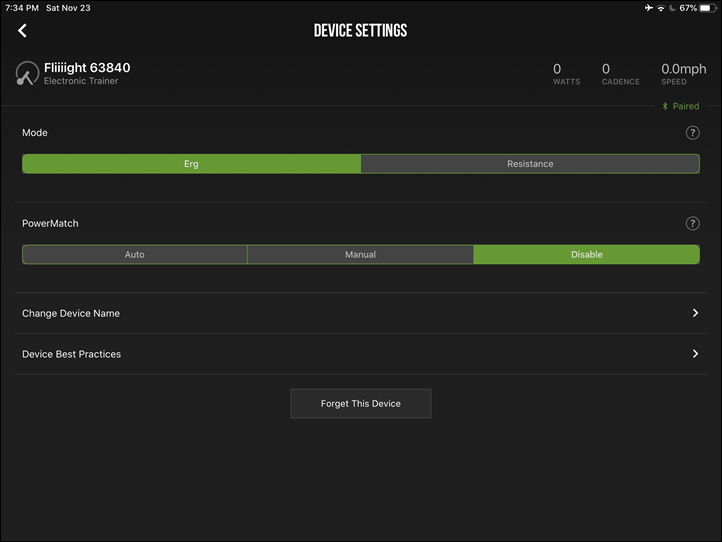
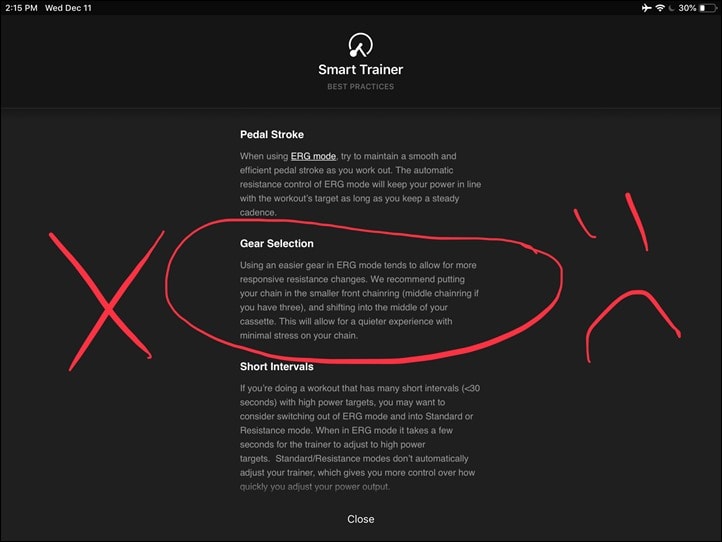

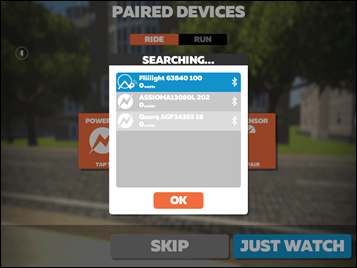
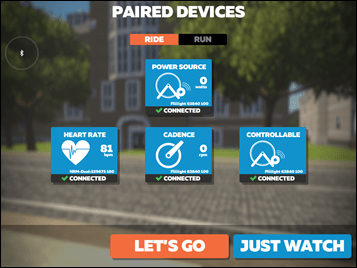
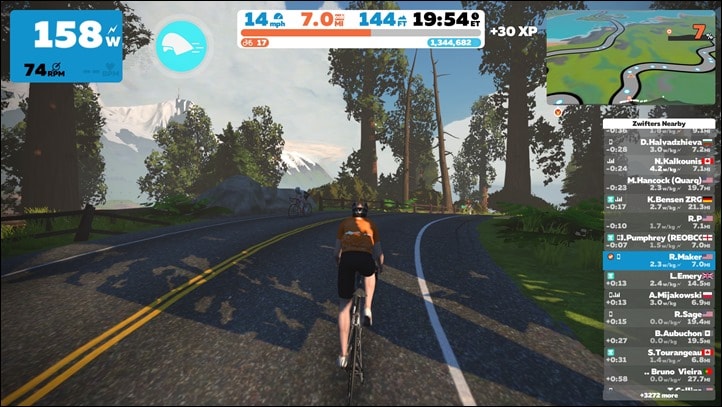
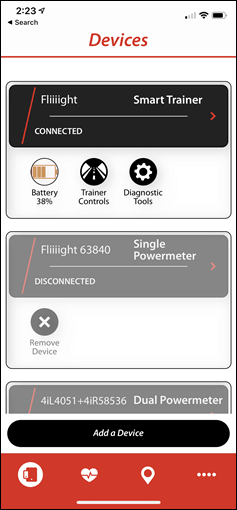
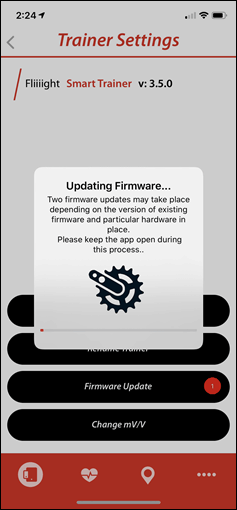
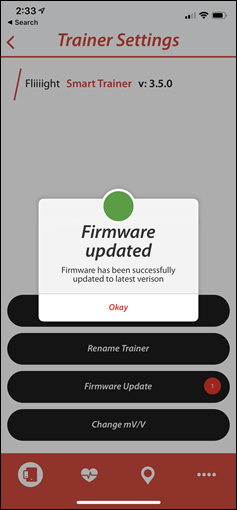

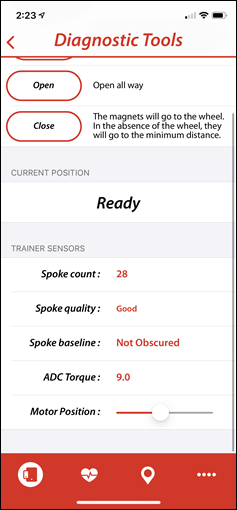
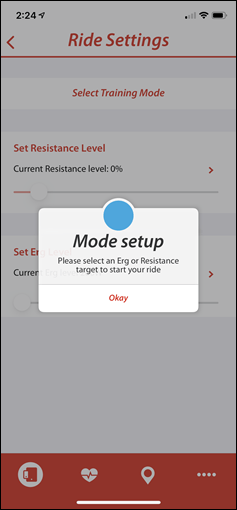
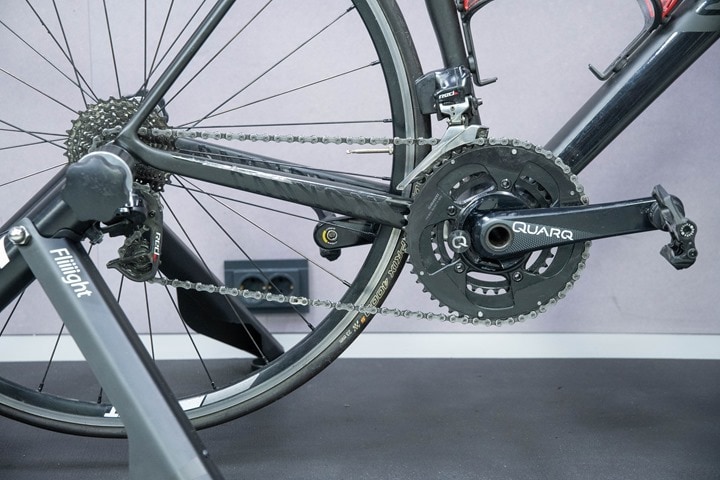












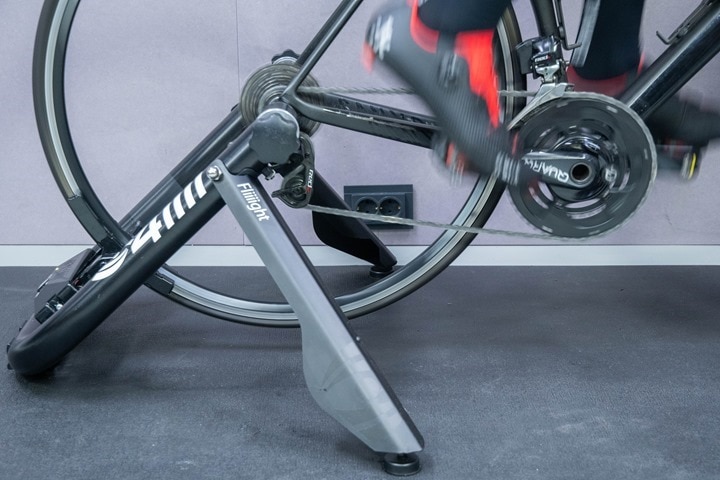
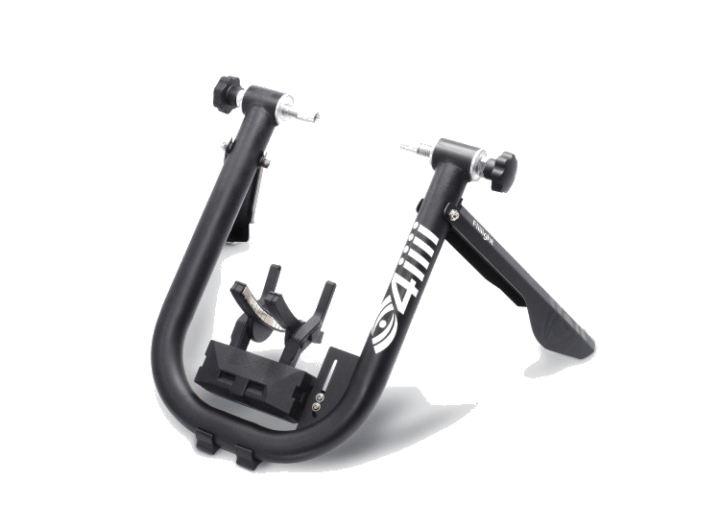




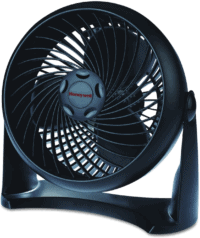
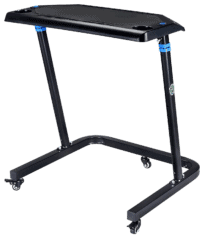
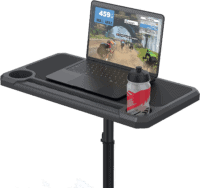

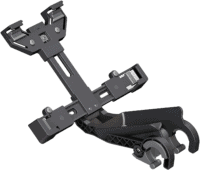





















So disappointed with this (i was ready to get an updated version). Did you remember the stac zero halycon having similar issues with max power or this is a new thing?
First off, as a general comment, I’m going to be going through and answering as many questions and concerns as I can. We want to make sure that all of our customers feel like they’re getting the white glove treatment, just as in the old STAC days.
Maximum resistance is highly dependent on how close to the rim the magnets can go. The “can” part is tricky — we don’t want them to contact the rim. On Ray’s suggestion, we’re including a high resistance option in the firmware. This allows for a much higher peak resistance, but also introduces a possibility of contact between the rim and the wear strips on the magnet array. As I write this, Art, our developer, is sitting behind me working on the wheel detection algorithm. This will significantly improve Ray’s (and everyone else’s) experience and allow a much higher peak resistance. Internal testing has regularly gotten to 1100W, but we lack the legs to go much further!
“On Ray’s suggestion…”
As I read reviews of every type of bike trainer on the market, I’m finding it very common that manufactures let the public test their products, and suggest recommendations that are then implemented.
Why can’t a manufacturer develop a good product before it ships?
A semi-random thought – would using a heavier rear wheel help to provide a bit more inertia? This might be a way to mitigate the relative lack of resistance for riders producing more power. (I’m interested in this trainer, but the limits on power at the high end are a concern – I’m no powerhouse (FTP is 275W, but I max out at less than 700W in a sprint), but put out enough watts to be over the suggested range.)
Martin, this is exactly what we were trying to accomplish with the wheel weights previously, and yes, it’s absolutely true. At the moment, the optical sensor is limited to detection of a wheel without weights (and “regular” spokes).
My FTP is around 275 as well, and the trainer is more than enough to do sprints during workouts. Our next planned firmware updates will address the maximum resistance issues that Ray experienced due to a better wheel detection algorithm. The higher peak resistance also allows virtual inertia to operate more effectively, since we can provide a higher peak resistance during the pedal stroke, which means an improved road feel. With proper wheel detection, the riders in the office with 350W+ FTP have no issues with the trainer whatsoever.
If this was cheaper, it’d be a GREAT option for my kids. They don’t need a super high FTP, because… they’re 6 and 10. They’re not putting out that much power. The trainer is quiet, which is nice when there are three of us in a small room using ’em. And with a wheel-on trainer, I’d have to make sure to clean their tires really thoroughly when going from inside to outside (and I can’t leave their mountain bike tires on), but with this their tires don’t have to be 100% clean and a mtb tire would be fine.
But at $599, that’s… too much to buy two of ’em, at least for me.
I am pretty sure that you have the “magnet test” backwards. The rim must be made with conductive metal so that the magnets generate eddy currents. They must not, however, be magnetic or all hell breaks loose. What you need is an alloy / aluminum rim that does not have steel pins in the joint. If a magnet sticks to your alloy rim, it has steel in it and you need to find another rim. Even with an alloy rim without steel pins, if the tire has steel beads, you may still have a problem. If I am wrong about this, just delete my post.
John
This is correct. I have a STAC Zero (power meter model) and the first wheel I tried on it was a very cheep wheel that had an aluminum rim with steel pin and it caused bad things once per rotation.
Good catch.Thanks!
This is a key point, and I suggest perhaps correcting the relevant portion of the review. I was set to get this trainer because my wife and I have have bikes with alloy wheels and different cassettes, and I liked the silence and lack of tire contract. But her Specialized Ruby rims have the dreaded steel pin, which is easy to find if you know to check with a strong magnet (hint, hold the magnet opposite the tube valve). Now, she could probably use a better wheelset, but I don’t want that decision to be dictated by the trainer.
You may recall that magnets don’t stick to aluminum, so using a fridge magnet to figure out if your rim is carbon or aluminum isn’t going to work. And I hope no one rides steel wheels these days.
I think it’s safe to say that if someone has carbon rims, they know it, because the wheels probably cost an extra $1000.
Hi Ray- Great review, as usual. One quick question, “assembly” is simply unfolding the legs? Does that mean it’s easy to re-fold back up for storage/hiding it (you know…wife approval). Looks slim enough to slide under a couch?
Yup, as simple as that!
Saw in your review that you prefer to always ride Zwift at 100% trainer difficulty. Any reason for that?
Mostly for testing, but also realism. I’ve gotta shift more – just like in real life.
For a nuts and bolts explanation, Zwift actually multiplies grade by 50% for default settings (25% for downhill), and at 100% I believe it’s actual grade for uphill and 50% on downhill.
So for those of us who ride Campagnolo, need a higher resistance than what is feasible with the Fliiiight, and want something more accurate/quieter than a wheel on trainer, what would be the best way to go?
If your group is 11 speed, I think you can go ahead with basically any direct drive trainer, as any 11 speed cassette (Shimano/SRAM) work just fine. Heck, sometimes I’d put my older bike with Centaur 10 speed on the KICKR (with 11 speed Shimano cassette) and it worked! I just couldn’t get to the last cog. I can’t say about 12 speed Campy, though.
Likely won’t help with the power limits, but as far as inertia have they considered making their own trainer-specific wheel to work with this? Given this trainer doesn’t need a tire, they could make a ridiculously simple rim (no need for the complex shapes to seat a tire’s bead, no need for brake tracks, no need for the strength to ever bare a rider’s weight, etc.) that’s intentionally heavy with an alloy ideal for their magnetic resistance. Would probably be easier to make it stay true as well (and thus run the magnets closer) too as they could use a more rigid rim structure since it doesn’t need to be compliant for ride quality nor worry about surviving impacts.
Back when I used a wheel driven trainer, I bought shimano’s cheapest aluminum wheel (RS10 IIRC) to put a trainer tire on so I could swap between outdoor and indoor riding easily. That cost me less than $100, so they should be able to make something pretty cheap (it’d be much simpler to manufacture, but they’d have less economies of scale) designed to work with this in an ideal manner.
Glad i read through this as I was seriously considering this trainer, but based on the limitations articulated I will have to give it a pass. I still love my other 4iiii products.
Wouldn’t adding a longer stick of magnets solve the resistance problem?
Or using a higher gear rather than higher cadence?
Not sure on magnets, but I ran out of gears. I basically ‘lived’ in my hardest gear on this trainer.
We’re really hoping that we can correct a lot of this with the next firmware. Ray, if you’re willing to do another ride with the updates, we’d be really keen to see if we can solve the issues for you (and others). More than anything, I just want to emphasize that we will continue to support any comments or concerns to make sure that all of our customers are happy.
Thanks for the responses!
Always happy to try future firmware updates, and update post accordingly.
Perfect, we’ll be in touch as soon as we have something ready. It was a bit of a surprise to see the maximum wattage so low, so we want to make sure that this same performance isn’t observed by any of our customers (or at the very least, we can resolve it ASAP). The trainer IS capable of much more, we just need to correct the specifics on your setup and prevent it in the future.
Did 4iiii give any insight into if (or how) they are planning on improving the power limits? I can’t help but think that the overlapping Venn diagram of people keen enough to buy a smart trainer and people with ftp of 200 or less is a small market.
Was really hoping for a more positive review as on paper this looks fantastic for the household. For someone coming from an old dumb trainer and maxing out at 500w just how bad is the road feel etc?
Very happy to elaborate on this! Our power limit is generally set between 5-7.5N/(m/s) of wheelspeed, give or take. This is the software limit where we start to back off the resistance. For example, if you’re travelling at 10m/s (36km/h) wheelspeed, the trainer will provide up to 75N of resistance (at the rim radius), meaning 750W of power dissipation. This is generally a mechanical/magnetic limit of a typical rim and the number of magnets that we use. Much higher resistance could be obtained with the magnets touching the rim, but that’s not a scenario that we would encourage!
The reason that this could be lower in some instances (and likely was, in Ray’s case) could be 1 of 2 possible causes. The first is misalignment of the magnets. This typically occurs when the alignment of magnets isn’t correct for a given bike, and it’s actually contacting at one of the tips, rather than being parallel. We have provisions for modifying this, which is really no different than adjusting a derailleur cable for proper shifting. The second, and likely primary cause, is actually the algorithm inaccurately determines where the rim is located. This artificially sets a software limit that tells the magnets “thou shalt not exceed this position” to avoid contact. If that line is too far away, peak resistance is significantly affected. As I mentioned in a previous post, we’re really digging into the wheel finding algorithm right now, which will provide a much better overall experience for the end user. I’m very confident that this will solve most of the problems we’re seeing!
I have a STAC Zero I’ve been happy with once I dialed in the alignment, but am looking to upgrade to a smart trainer. Cancelled my initial 4iiii order due to nervousness about the power range, but it does seem to me that the issue must be this magnet centering/distance policy, and if it could be resolved in firmware or with a “yes my wheels are true” option then I’ll definitely order another. I’m a techie and I know the technology can work, if there’s enough magnet power to give the algorithm some margin to work with.
For reference, my STAC Zero is set up with the magnets 2.4mm from the rim, and these days my typical rides are 200-220w average with 600-700w sprints, typical gear 50:17 to 50:13.
I like climbing so I’m not so concerned about wheel inertia “road feel” as others. With the wheel weights on I think the Zero subjectively feels like pedaling up a long 2% grade.
Well, damn. For the moment I’m happy with my STAC Halcyon, but if I ever get back to consistent training again, I might not be. That makes it a really hard sell to upgrade, or to recommend. On the other hand… I really do like how quiet it is. I really do like how portable it is. I don’t want to get rid of it; but if I get a new smart trainer, the Fliiiight is probably not it.
I hope to see some improvements in the future that maybe change this picture, but for now I feel pretty disappointed.
Hi Matthew, sorry to hear that you’re disappointed, but I do feel that we have some updates that may change this. Everyone in the office who has tried it agrees that it is leaps and bounds ahead of the feel of the Halcyon. Numerically (in terms of wheelspeed variation, which is our primary metric for assessing “road feel” numerically), it scores much better than the Halcyon (about half the variation that we would see under the same conditions with the Halcyon).
Do you mean half the wheelspeed variation of a Halcyon with wheel weights on? That would be remarkably good.
Yes, that was actually our primary baseline for comparison. We performed tests measuring the variation in the Halcyon, KKRM, Cycleops Fluid2 and Fliiiight. The Halcyon was our benchmark, knowing that we would need to improve on that to keep our customers happy. We’re very happy to say that this is something we’ve accomplished. If anyone is interested, I can provide some of the graphs to compare the different wheelspeed measurements. I don’t want to clog up the responses with irrelevant engineering plots if no ones cares though!
Well I’d be interested. You might also take the opportunity to clarify that you’re measuring velocity much faster than once per wheel rotation (at every spoke passing), to support the inertia simulation. Ray’s report seemed unclear about this.
I’m glad to see you so engaged for your product’s success under new ownership.
I missed responding to this comment when it first came up. I’ve attached a screenshot of the wheel speed variation that we measured when we were undergoing development. It’s actually come along quite a ways since this was measured (and were directly making comparisons). BW = bar weights, which were standard for the Halcyon, BW+E = bar weights plus “ears” which added about 60% more inertia over the base weights, and VI is the amount of virtual inertia effect. It’s permanently fixed at 100% now, since we have it functioning much better. This graphic shows that (at the time) we had nearly halved the wheel speed variation of the Halcyon (bottom left) to the Fliiiight (top right). It’s since gotten even better, but it definitely does reward a repeatable pedal stroke.
To your point, we’re measuring velocity (or more accurately, position) every time a spoke goes by. If you’re running a hypothetical 48-12 gearing with a 28 spoke wheel, this means the trainer measures speed 4×28 times per crank revolution, which is not far from every 3 degrees of crank rotation. It ends up being a very accurate encoder as a result. This also means that we can effectively determine instantaneous cadence, so I would actually posit that the Fliiiight is the most accurate cadence detection, even more so than magnets (1x per revolution) or crank based PM’s (maybe based on 10x per crank rotation). Not that it really matters at all, just an interesting quirk.
Hey Andrew,
i’m curious about why adding a bit of real-world inertia is actually impairing results when using full VI and if it’s still the case on the current firmware? My experience is the opposite on v3.7.0, that adding a heavy tire+tube (as proposed by Erika from the 4iiii support team – before i was running the bare rim) helps with “road feel”.
Also, i’m a bit puzzled about the note about cadence you made. Not knowing much about the exact techniques used i always assumed that powermeters at the end of the drivetrain (and the smart trainers for that matter) use some kind of FFT of the torque-signal to approximate cadence – irrespective of wheel speed?
Oh and thanks for all the valuable insight you’re spreading here, highly appreciated!
So it looks like I’ll be returning mine – my FTP is > 200 and I’m looking to raise that so this isn’t suitable for me.
I do live on the top floor of an apartment which was the main reason for buying this. What’s my next best choice from a vibration and noise point of view? I guess direct drive is quieter than wheel on? Any recommendations? Thanks..
I didn’t mention in my other comment – thanks so much for this review! The low power limit isn’t necessarily a deal breaker for me, but hearing that it was like riding through mud to get things to work reasonably well at higher power outputs definitely is. I still like a lot about this trainer, and perhaps with further refinement they can improve these areas. The lack of noise and tire contact, cassette-agnostic nature, and ability to toss it under the bed are all very attractive.
I was disappointed in this. I really like to see creative thinking and innovations come along to push the technology along. I bought a STAC Halcyon when they were clearing them out and had virtually no issues with setup or operation that DCR had mentioned. I’m not a huge FTP person, currently sitting at 200’ish down from 263 in the spring and probably will never get over 280-300 so for me it is every bit as good as the TACX Vortex I had before it, the big advantage of being quiet (my Vortex had the dreaded spindle whine). I added an extra 5lbs of weights to the rear wheel with some zip ties and all it is all good. I was hoping that the new unit may provide some ride advantage over the Halcyon, but it doesn’t appear to except aesthetics so I guess I just saved some upgrade money.
Hi Stuart, can you email us? I’d feel better if we can solve your inertia problem with another solution. While I admire the creativity, the wheel weights themselves are more secure and will be much easier on the spokes. We have some of the old Halcyon inertia upgrades that we could look at getting to you.
I might be interested in picking up a Halcyon inertia upgrade. I couldn’t find them anymore on the old Stac site, and didn’t see them listed on the 4iiii site either.
In the product comparison chart, the fliiiight max. wattage is listed as 2200W. Is this a typo or a 4iiii claim? Are manufacturer claims for max power and max simulated incline generally realistic?
This is their specific claim. I usually list claims in the table/database, but then expand upon that within the text (as I did here).
Generally speaking the max wattage claims are only if powered by a machine. Meaning, they’re almost always driven by flywheel speed. So yes, if you can somehow get this trainer up to whatever crazy speed it is, then it’ll provide that resistance. Just like if you can somehow get a KICKR or what-not up to the speed specs they list, then the same applies.
Wording seems wrong here:
In the case of simulation (aka slope) mode, the Fliiiight can simulate from 0% to 7% incline – which is above the competitors in this price point. The Elite Tuo goes to 10%, the Saris M2 to 15%, the Wahoo KICKR SNAP simulates up to 12%.
Wouldn’t 7% be below what the competition can do?
Thanks – should say ‘below’.
Thanks for the review. I’m curious about the portability aspect. For those of us who don’t have any indoor floor space big enough for a trainer, something like this would seem ideal for setting up in the yard for a quick interval session, then packing up and putting away afterwards. Or for taking to races/events for warmups and cooldowns. How would the Fliiiight work in those kinds of scenarios?
Super portable. I can’t really think of a trainer that’s as portable as this that’s still a full fledged smart trainer.
Thanks! That seems like enough of a niche to drive some decent sales, power limitations be damned (speaking as someone who would struggle to hold 200W for 5 minutes!)
Hi Ray,
What are your thoughts on the durability of the system? It seems that the two armatures with magnets would be quite exposed to being knocked out of alignment, and given the nature of how the trainer works, I would be concerned that this is a significant vulnerability of the trainer?
Did you experience anything or did 4iiii mention anything in regards to how critical the alignment of these magnets are?
Scott,
We’ve actually made some pretty serious upgrades to the strength of the components. One weak point previously was the connection between the arms and magnet holder, but this is MUCH stronger than our previous design. Another weakness was the spring plungers, which would get bent, while this now uses a ball-plunger design which is virtually impossible to damage.
Making sure that we have a reliable unit was one of the key steps of our design process, so we improved upon all of the lessons learned in the Halcyon. We’re very confident of the reliability, and have a 2yr worldwide warranty (which exceeds the typical 1yr).
Let’s ignore the sim issues and agree this unit is best for “lightweights” interested in ERG workouts.
What would you say are the biggest differences between your Halcyon review with wheel weights and the 4iiii experience?
What is the maximum watts you reached at any time if even for a few seconds? (or PP in Xert)
There is a BIG difference between saying this unit is best for 200 watt FTPers versus 4iiii suggesting up to 250?
Not noting this limit/range on their website is a HUGE oversight sure to cause customer service problems.
BTW: The Halycon instructions do mention running in top gear for ERG.
I had (and still have) my share of issues with the first version of this trainer. But i have to admit that the support so far has been not only friendly but also very commited to get everything sorted out.
After a bit of tinkering i had my first little testride yesterday, without any signal dropouts. I played around a bit with cadence and wheel speed, as you can see in the attached (non-smoothed!) graph. Most importantly, i am obviously able to easily get >600W out of the machine (which i can only hold for a couple seconds, as i still have the mandatory winter cold..).
The trainer itself obviously is completely silent – it’s my worn drivetrain and the sound on the small cogs that is responsible for any acoustic pollution. Also, it’s foldable and can be setup in maybe 5 minutes.
Ray, can you please comment on the fluctuation of wattage in erg mode? It looks quite high to me, but i have absolutely no experience there.
Hi Volker, if you’re still having problems, please reach out to us again! We’re still continuing to support the Halcyon, so don’t hesitate to ask questions.
Regarding the fluctuations, this is pretty typical of any power meter. Getting down to the base physics, if you have a massive downstroke, you’ll have a large spike in power for that section of the crank rotation. If you smooth it slightly (i.e. average for the typical 4Hz reporting frequency for ANT+ devices), this spike will be slightly smaller. As your averaging time goes up, you continue to get smoother and smoother lines.
Using what I’ll call a 3rd party for the sake of the argument, a good, high inertia fluid trainer like the KKRM will still show a lot of these fluctuations in the unsmoothed power traces recorded by a pedal/crank based PM. If you start to apply 1s vs. 3s vs. 10s smoothing, the traces get smoother and smoother. I personally think 3-5s is best, since it can capture sprints and is also relatively stable, but anywhere from 10-30s will also be adequate for a lot of riders in many scenarios. Ultimately, even if there are measurable fluctuations in the unsmoothed chart, this will not be something perceived by the rider and will feel very natural.
Thanks for the valuable info, Andrew.
While i’m pretty confident to understand the mechanics (& statistics) side of the equation, i lack the experience concerning the best practices and technology limitations in the smart-trainer-realm.
Halcyon owner here.
1. It looks from the pics that the Fliiiight has a smaller stance than the Halcyon. I find the Halcyon some centimetres too wide for a std mat (one leg up, one down). This is uncomfortable as one would want the bike to stand straight. Can you confirm if it has been reduced?
2. Is it confirmed that the battery went down from approx 10 to as low as 2 hours? Can this be tweak via some configuration (fi. Disabling sw controlled road feel) or did they use a smaller battery? The magnetic usb plug is a good move but some setups like mine make it impractical to train while plugged and neither my Garmin needs to be charged three times per week…
3. I am ‘collecting’ zero upgrades, went from mechanic to electronic in the past, and would consider to update to the Fliiiight robotics once done with the reported annoyances. I watched a YouTube video with instructions but the upgrade is mentioned nowhere else. Any information around availability and price point?
4. STAC Andrew mentioned a failing part few comments below. What is he referring to? What should we look out for and how has that issue been resolved?
I use two bikes and own two sets of weights. I mostly do without because I don’t like to use the center ones on the Powertap hub, or the radial ones because they don’t fit my trek frame (touch speed trap), or don’t work with aero spokes. So there’s always something wrong with my setup. So:
5. Is the new optical piece compatibile with aerospokes (or will that be another variable in the mix)?
I won’t stop insisting that for this trainer to become practical it will need to get rid of the right knob and adopt a pulley release lever instead.
Great questions, and it actually gives me an opportunity to expand on a few points that you brought up (like battery life!).
1. The trainer largely follows the same geometry as before. It does sit a bit higher with the new legs (the cutouts aren’t as deep), which means that the legs don’t go quite as wide. I don’t have one of the production units with me at the moment (at home I have a pre-production frame, as well as a bunch of old STAC Orange frames). This is something that we can get back to you with exact measurements on.
2. We went EXTREMELY conservative with the battery rating. At the time of establishing it, we didn’t have all of the final production pieces in place, only prototypes. With a full production spec unit, I typically see 5-6h of riding between charges (even more when in Erg). The constant movement of the motors does make it somewhat more demanding in comparison to the Halcyon, which used a significantly smaller 18450 Li-Ion cell, but we now use a pouch cell that’s about 3x the capacity. All in all, most people should find it very comparable, we just didn’t want to promise 4h before having the production battery in our hands, only to find out it was much lower. This is one of the specs that we’ll likely revise in future literature.
3. At the moment, 100% of production is going towards fulfilling orders and clearing out our backorders. Ray actually has a pre-production unit with a glossy, fingerprint-susceptible finish on the plastics. The production version is more subdued finish that looks much better overall. In any case, once we have the pre-orders cleared out, we will be offering an upgrade unit. We have tried to maintain nearly 100% backwards compatibility for all of our previous versions so that our customers don’t have to invest more than necessary to upgrade. Plus there are people who ACTUALLY like the orange frame (I know you’re out there — you’ve written in to ask about keeping it with the upgrade!).
4. The previous failures in the Halcyon were typically related to either the USB socket pulling off the cirvuit board, even though it was reinforced, or the spring pins which prevent the magnets from rotating getting bent during shipping and not engaging/releasing properly. I know that this is not something manufacturers would typically admit to, but I want to be fully transparent. In the flight, the spring pins are now spring detents which have a steel dowel pin preventing them from over rotating (the detent is a ball bearing on a spring, so there’s nothing to bend), the magnet arm material is about 2x stronger than the previous arms, and the magnetically detachable cable is something that prevents and USB tear offs.
5. Yes! It should be fully compatible with most spokes, and there is a very small change that can be made to essentially guarantee compatibility. The optical sensor is using the spokes to determine wheel acceleration, but for indexing, all it requires is one spoke to be wider than the rest. If you have spokes that are extremely wide (and don’t fit the index reflector piece), all you need to do is put a small piece of tape on the spoke that is a bit wider than the spoke and interrupts the beam. This provides the wider “index” that we’re looking for, and is a virtually zero cost addition/fix in the circumstance that you do have very wide spokes. As an aside, the spoke index was actually initially designed as a reflector for outdoor riding, so it’s kind of nice to keep in place for general visibility, seeing as so many cyclists seem to be getting hit by cars these days…
Regarding the knob/quick release, this is a very polarizing topic. Some people love it, and some people hate it. The main reason that it stays is because it simply keeps the bike clamped in more tightly, which gives you better trainer performance.
Anyway, congratulations to whoever made it to the end of this novel-length response!
Are there specific rim sizes required? I couldn’t find that info on the 4iiii sight. I was thinking this might be a decent option for my kid but that bike has 24” rims.
It can be adjusted for smaller rims such as 26″ and 27.5″ MTB wheels, but 24″ would be right on the limit of accommodation. Since we haven’t specifically tested with this wheel size, I would recommend holding off for now, at least until we find a bike that we can use for testing.
In general, the different wheel size does require a small modification in the app, but only takes a matter of seconds. You just need to let the trainer know what wheel size is being used so that it can convert the power to the smaller wheel size. This would be most common for 650 or 26/27.5″ wheels, since it is set up to use 700c diameter as a factory default.
Hi,
I have the STAC halcyon and was looking to upgrade so I don’t have to swap wheels when I ride inside or worry about centering the bike like I have to do now. I have had issues with getting the wheel centered putting the bike back in the trainer and the magnets rubbing on the rim.
I live in a condo and love out quiet the halcyon is. I had a wahoo snap and my downstairs neighbor used to complain about the noise. No complaints since I got the halcyon.
All my indoor rides are custom workouts from my coach that I create in zwift. I don’t use sim or erg mode (I shift gears like I would outside) . My FTP is 266 and during short sprints, I generally top out at about 700 watts. I have had no issues with the halcyon providing enough resistance. I wanted to ask if I would have issues with spinning out on sprints.
Thanks
Hi Chong,
from my limited testing (see link to dcrainmaker.com) and Rays comments in the test i personally see no problem going 700W and beyond. That said, i set the “motion limit” of the magnets 3 steps IN within the (pre-release) android app, as supposed by 4iiii-support. But i also wasn’t in the “hardest” gear within my testing, but rather in one where the chainline felt reasonable (probably 52/13).
STAC Andrew mentioned somewhere above that they are working on the rim-detection algorithm to increase the possible wattage without the finetuning using the app, and indeed there are firmware updates coming frequently at the moment. Hope to get in another testride tomorrow.
That’s correct. We’re hoping to have the new firmware approved in the next few days, pending a few more tests. It should generally increase performance across the board: better virtual inertia performance, higher maximum power, lower likelihood of rim contact etc.
I’ve attached a power file from our in-house BMX rider, Jerold. He rides at a national level, and the first few seconds of a BMX race involve extremely high power (up to 1500W for the national riders). He’s been able to get 1100W out of the trainer, and we suspect that this is actually reported based on a 3s average (since it depends on the software that’s receiving the signal as well). We don’t have the raw, unaveraged data from the ride, but even with the averaged power trace, he still managed to hit nearly 1100W!
Thanks Andrew and Volker for your replies.
Andrew – will there be an be an option to upgrade my halcyon rather than buying the new trainer? The mounting seems to be the same as the halcyon and an upgrade kit would be great.
Thanks,
Chong
@Andrew: Would be interested in the wheel speed during the 1100W peak. As an accomplished BMX-Rider he can clearly go at insane cadences, which should result in some very high angular velocity of the wheel. I fear 144rpm is not for everyone. :-/
@Chong: See link to dcrainmaker.com , paragraph 3. ?
Hello Andrew,
Please keep us updated here, when the new firmware goes live.
Also, would you mind checking the link below and confirm whether this back wheel is the one Erika from your house has suggested for optimal power output (or otherwise point me to the best rear wheel for the fliiiight available in Europe):
link to probikeshop.fr
Thank you in advance!
144 rpm is definitely high (well beyond my abilities!), but not the only case where this power can be hit. We had an instagram post recently of a high wattage sprint at lower RPM, and I also did a 600-700W Zwift sprint at 105rpm the other day, which was pretty reasonable for the situation.
Yes, we’re working on an upgrade kit but have to deal with the initial demand before we can roll it out. I know that as of right now, we’re finalizing upgrade kit packaging, so it’s hopeful that sometime early in the new year (maybe February) we should be caught up with demand and able to offer the upgrades! Everything is 100% compatible though, so you can keep the (glorious!!) orange frame!
Hi,
I would like to use the trainer on my bike with shimano alfine hub and belt drive. It should be very quiet.
Ray or STAC Andrew, do you know if the axle nuts will be compatible with the clamp system of the trainer ?
Does an internal gear hub suitable for that kind of trainer ?
Thanks
Ben, from what I can see, it appears that you should be compatible. There are a few things that I would double check, though. First off, make sure that there are no cables coming out the end of the skewer/hub. Some internally geared hubs I’ve seen have a cable running axially through the hub, which means the skewer cups wouldn’t fit. Next, if you can confirm the hub nut diameter is between 15mm and 17.5mm, this should allow the ends to fit into the skewer holders on the trainer. Aside from that, the other crucial step is to make sure that you don’t have a steel beaded tire or a steel pin, which can be tested using a strong magnet (most fridge magnets aren’t strong enough to accurately determine whether you have any steel). Also, make sure that you don’t have carbon wheels! Aside from this, you should be good to go!
I made some measurement on the axle nut of the Shimano hub.
Do you think it will fit ?
Hi Andrew (and other 4iiii Stac employees).
As far as I can tell, this thread seems to have the most recent information about the Fliiiight. Is there anywhere else I should be checking to learn about firmware updates, tips on tweaking the setup, etc?
That looks like it should be a good fit! If you do have any issues with fitup, please let one of the support team know and we’ll figure something out (any technical support requests like this will ultimately make it to me anyway). Hope that’s helpful!
Would this be a good option for an older couple just getting into cycling? Since the Plantar Faclitis has reared it’s ugly head running has become less and less fun. So we want to try cycling. I want to ride indoors during the colder months and really like the non-contact resistance. Neither of us are powerful riders and just want something fun, easy to use, reliable, and quiet. Thanks
Personally, I think it’s very applicable, but that’s obviously a biased opinion.
Taking a step back and relying purely on the advice and recommendations from Ray, your use case would be very applicable. With my insider knowledge, I also know that we have some new firmware developments that will allow us to increase maximum resistance and provide a smoother ride at high power, which is ultimately the name of the game. As we get feedback from users, we’re rapidly improving the code for a better and better ride!
I’ll give it a go. Placed an order from Power Meter City yesterday. I’m assuming that any software updates will be available for download and install by the user? But what about firmware updates? If new components are developed or modified, such as those you say are in the works at present, will I need to purchase those?
I am looking forward to it. My power will increase but I’ll never be 30 again. But I’m thinking that 4iiii will continue to grow and improve the experience. And that may be fun to be part of. The new bike will be here tomorrow so hopefully, by years end, I will be back here with a report. Cheers!
The Xert app on your smartphone will update the firmware on the trainer whenever a new release is made available.
I initially purchased a STAC Zero Halcyon as a second trainer for summertime travel. Now it’s the only trainer I use. My Hammer is gathering dust and will soon be sold. The Hammer is a great trainer and was my go-to for Zwift before I grew tired of the 3D simulations and their ERG library/methodology was ho-hum. Now my Halcyon + Xert does everything I need. YMMV. Have a nice fliiiight. :)
*4iiii app on your phone
OK….so because I put the cart before the horse none of my wheels are compatible. And yes…I did order before I checked. I knew I had 2 aluminum wheels and one alloy wheel. I was thinking at LEAST one of those would be suitable. But no…..the aluminum wheels are pinned and the alloy has a band. And 2 of the local bike shops were no help. One did have a suitable wheel set but it was $2000.
So unless I can get a suitable 26″ wheel I may not even get a chance to try it:-(
If anyone can help……..a 26 is preferrable but a 27.5 would work too.
26″ wheel mountain bike or hybrid? Shouldn’t be hard to find or expensive especially if used.
link to stacperformance.zendesk.com
In my experience, the unit doesn’t work at all. When turned on, the arms do the initial movement. After that, nothing. It supplies no resistance of any kind.
The 4iiii android ap installed on 4 different devices won’t pair to it (find = yes, pair = no), though Fliiiight’s blue light is in steady mode which website says is ready to pair. All devices were cycled into / out of airplane mode. Like I said, the ap finds the device but only endlessly “searches” for the connection. (Yes, location is enabled).
Zwift on PC with ant+ (a setup that works fine with my Snap) finds the Fliiiight as a PM and a Controllable Trainer, however the game picks up no signal from the Fliiiight (my avatar won’t move). Instead, pairing my Quark with Zwift, my avatar moves but the still paired Fliiiight controllable trainer provides zero resistance.
Wheel passes magnet test. Device magnets appear to be suitably aligned.
Can anyone offer a solution or do I just box it up for a return? And does anyone know how to get free return shipping on a faulty item?
The 4iiii app should allow you to check firmware version and test all functions.
Did you file a support request with 4iiii?
It seems the fatal error I’d made was having more than 1 reflective thingie on my spokes. Solving that…
I was able to get the trainer to provide some resistance in Zwift (via Windows PC). At the Zwift default 50% trainer setting, a 1% grade in Zwift led to some contact with one side of the rim; the 3% grade led to significant contact on both sides of the rim that pulsed between bad to worse when I changed my pedal speed. For the initial 0% grade “on the beach” where I’d dropped into Watopia, the trainer pulsed without grabbing the wheel, with the ‘road feel’ being like biking over mud (normal resistance, then slip, repeat).
I stopped pedaling to check my wheel after the significant contact (rim was pretty warm ~10 min into riding), and on restarting the trainer didn’t register in Zwift any more. I turned the trainer off, swapped bikes to test a different wheel, then re-paired, which got Zwift to recognize my pedaling again, but the magnets still scrapped both sides of the wheel so I gave up.
I’m in a holding pattern since 4iiii is closed until Jan 02. It doesn’t matter what their target FTP market is, this is unacceptable performance.
I didn’t test the trainer on Zwift, but only on the 4iiii app, which by standard works on ERG mode at about 200W resistance (forgot how much watts it was and I’m not taking out of the box to pair and check), and had the same problem. The contact to the rim to the magnets, however, seemed to be more intense in my case (I’d hear that awful sound every 1 second or so), so I didn’t dare riding for more than one minute. I guess it was worse for me because of the higher resistance on ERG mode?
A few comments above I saw Andrew saying that 4iiii was going to tune the firmware to increase resistance, so maybe that’s the issue?
Sue, sorry to hear about the issues that have been occurring for you up to now. Please contact me at andrew@staczero.com (not sure if the address will be obfuscated by the comments, so in writing this, I don’t know what it will look like).
I’ll do what I can to get you up and running over the holidays, since I don’t want to see anyone stuck in the position where they can’t use the equipment that we provided.
Just received my unit. It’s very easy to set up and put the bike on, as there’s no assemble required. I turn on the power, and the trainer does its magic of moving the magnets. That’s really cool! But the magnet sat oddly too much closer to the right of the rim. Well, maybe it will adjust itself? Nope. As I peddled, the rim would bang the magnets constantly. Maybe I placed the bike too much to the right side? So I tried re-centering it, placing the tires above the “4” mark, just like in the review photos, but had no luck. Maybe my wheel was banged too much on those city rides? That’s okay, I have another bike newer and in a better condition to try it out!
As I placed the newer other bike on it and turned it on, the magnets now decided to attach to the wheel, and did not distance themselves from it. So now the banging is gone, because they won’t let the wheel go. They loooved those Fulcrum 6. So much that they simply don’t move when I tell them to open up. They keep the same as if closed.
Now I placed my old bike back and kept trying some different things, like opening and closing the magnets over the app. I only saw some improvement upon reducing the Erg Level to 90W on the app. The banging kept going, though, even if not at a such egregious intensity as before.
This trainer was supposed to be small and foolproof enough to set up and fold on a daily basis in my tiny apartment, so my wife and I could keep in a decent shape over the winter. Now I see that this trainer is indeed simple, simply unusable.
Magnets get aligned on rim not tire. Rim must be non-ferrous. Ditto with tire (no wire bead). Should ride in top gear for sufficient wheel speed.
I rarely fold my Halcyon except when traveling but I routinely dismount/mount my bike on a weekly basis (in less than a minute) using non-drive adjuster only.
Did you contact 4iiii support?
Hi JD, thanks for your comments.
Yes, the magnets were aligned with the rim. No issues there. I didn’t try pedaling at a faster, harder, gears because I was afraid of damaging both/either of my wheels and the trainer. Are you suggesting that going harder may solve the issue?
I sent 4iiii describing the issues. I hope this is a firmware problem, but we’ll see.
There are a few things that may contribute to this, as some of the other comments had indicated.
The first thing is that there can’t be any steel in the wheel, which is absolutely crucial for proper operation. This can include both a steel pin (which is opposite the valve stem in 99% of cases), and/or a steel beaded tire, which has a slight attraction all the way around the wheel. This would cause the magnets to grab in place and hold there.
The second contributor could be misalignment of the magnets and the wheel. This can happen due to a slight difference in alignment with some bikes/skewer combinations. The trainers are aligned at the factory, but every so often, there is a bike with a slightly different skewer/axle alignment. This will be visible if one tip of the magnets touches the rim first. This can easily be corrected using the provide 3mm and 4mm allen keys, and following the instructions on the online user guide.
Failing this, a new firmware update will help find the wheel more accurately, so that the software knows to “stay away” from the wheel location. Our developer has made significant improvements to this recently, so updating to 3.7.0 will help quite a bit.
Usage wise, we always recommend staying in the gear that provides the fastest wheelspeed for ERG mode. This allows the magnets to stay furthest from the wheel, and provides the best road feel.
When following all of these steps, the trainer is easily able to provide a significant amount of resistance without contacting the wheel. In a recent ride, I was able to hold 600W at 70rpm without any kind of contact or noise.
Since it is such a different method of generating resistance, there is a bit of a learning curve to using it, but we’ve had feedback from many customers who initially had issues, but then end up loving it once they follow these steps.
I hope this information helps yourself and others!
Hi Andrew,
Thanks for the additional info. Unfortunately, they are not very good news for me. I checked Fulcrum Racing 6’s specs and it has steel spokes. After reading your post (an re-reading the whole comment section) I decided to check it out with a small magnet and I saw it sticking to both the spokes and the rim. So the Fulcrums are a no go. I did the same testing with the Alexrims and the magnet did not stick to spokes, nor the rim, until…it did on the opposite side of the stem valve.
So that explains why the Fliiiight’s magnets bit the Fulcrum and wouldn’t let it go, whilst on the other rim the magnet would touch it at about every revolution. Neither set of wheels I have are compatible with the Fliiiight.
I loved the Fliiiight’s concept, as its small footprint when folded and light should be perfect for for small apartments like mine (I could just put it inside the box and slide it under my IKEA sofa!). But having to buy an extra rear wheel – and having to find a place to keep it – just defeats the purpose for which I ordered it in the first place.
All of my spoked wheels have steel spokes.
Is it possible your Fulcrum wheel has a wire beaded tire mounted? That would explain a continuous magnet pull.
A ride buddy has used my Halcyon without any issues and he has Fulcrum wheels, but I’m not sure which series.
I will move forward with 4iiii. I’d thought I might get more help here, but will follow up with them.
I don’t know how I can know what firmware vs it has since I can’t get any of 4 phones to connect to it, and don’t see an option to find this information within Zwift (the only thing that appears to connect to it).
If you know someone with an iPhone try could try installing the iOS app and pair on that.
If you can’t pair with either OS I suspect a return is necessary unless 4iiii support has a trick to reset the device.
I appreciate you’re aiming to be helpful, but surely we can agree the requirement to have a certain phone, or a friend with a certain phone, or shit – any phone at all, let alone the additional requirement of giving permission to access one’s location – is pretty stupid for buying most things, let alone a stationary bike trainer.
We are working on a release of the Android app which should be updated by the end of January/early February. Firmware updates can actually be conducted directly from a Chrome browser on Mac/Windows or Android, but iOS devices must use the app for any updates.
Location access is actually a requirement in order to access bluetooth for either Android or iOS, and well outside of our (or any developer’s) control. This is due to the fact that many companies use bluetooth beacons to ping a phone when you’re walking by a store, which can ultimately lead to identification of location. We’ve had this comment before, but sadly, bluetooth connection is predicated on permission of location access.
My point is if you cannot pair to the native 4iiii app using either phone OS, the trainer is not working properly.
There is no point attempting to use it with Zwift or any other app.
You need ability to check the firmware and run other functions only available within the 4iiii app.
When working properly it will pair to the 4iiii app where you can update the firmware and run other tests.
The magnets should not contact the rim other than during initial calibration or perhaps an extreme effort at low rpm.
My Halcyon just works (hop on and ride) but I only ride ERG. Looks like the Fliiiight has some new model issues.
It may come down to permissions for the app to access bluetooth. As another comment pointed out, you need to have location services enabled in order for the app to be able to use the BLE radio. We’ve tested extensively through multiple generations of iPhones and Android devices, and haven’t seen this before, so permissions/access is where I would start looking.
If you are using Android, the STAC Control Panel app will successfully control the trainer in exactly the same way that the new app will, just with an older skin and less polish. Hope this helps!
Thank you for explaining the location access is beyond your control. I didn’t know that before.
I’ll try pairing with the PC to look for a firmware update. Does that have to be by bluetooth? Or can I use the USB cable?
Hi Sue, for yourself and everyone else, I’ll post the link for updating the firmware: link to staczero.com
The USB connections on the electronics are only for power, so unfortunately there’s no way to provide a direct wired update. This link is not pretty (hence the “beta” in the link text), but should allow you to perform an update to 3.7.0. It’s a bit slow with this protocol, so don’t be surprised if it takes a few minutes to complete. This is typically done in the factory with a special programmer attachment for the wired connection, but it’s not something that’s commonly available to consumers, so that just leaves the “over the air” updates as a way to get things through. This link must be used in Chrome for Android, Windows or Mac, but will not work on Chrome for iOS. It can’t be on any other browser, since it’s a specific Chrome plugin. Also, you need to have a computer that is able to broadcast on BLE, so if you can connect a mouse or speakers, then you’re probably good to go. Pretty much every Android phone should be compatible these days.
We agree that it’s frustrating about the location permissions being required to enable BLE access, but this is something that has been in place for Android for quite a while, and I think in the past 6 months iOS decided to follow suit (possibly with their new release and enhanced security/user privacy). It was a surprise for me initially, but when our developer explained the reasoning, I understood why it could be a giveaway for location.
Hopefully this helps! Also, feel free to reach out to me at andrew@staczero.com with any support questions (or anyone else who is reading this at the moment!). I’ll be checking email fairly regularly over the holidays, and I want to make sure that anyone who has received a Fliiiight for Christmas is able to get it up and running without hassle (or without having to wait until everyone is back in the office after the break).
Just a small note on that:
One needs Windows 10 (7 or 8 won’t work) or Android Version 6 or newer (5 won’t work), see link to github.com .
This is, like the Location Services Permission, out of 4iiii’s or STAC’s control. It’s just that Chrome won’t support Bluetooth properly on the older systems. Take also note that there won’t always be error messages (unless you open up the developer console).
And yes, i learned this the hard way. Hope you don’t. ;)
I don’t understand anything in the link you shared, but I do have Windows 10 and the update feature isn’t working for me.
Whether on my windows 10 PC, or on a tablet running Android 7, the firmware update doesn’t occur. Should the bluetooth light stay on for this? As soon as I select to start the update, the BT light on the Fliiiight goes out.
Hi Sue,
i had a similar problem on a Win 10 machine (& reported to 4iiii-support – but it’s still holiday time). Was able to connect to the trainer, the controls did work (moving the arms & so on) but the firmware update stuck at 0% with the fliiiight unresponsive and the blue light off. Another try using an Android 8 device worked flawlessly, though. So i thought it was just something with my own Win 10 installation.
Hope 4iiii-support (or STACs Andrew) can help you as soon as they return back to office there. I found them very friendly & helpful.
First off—many kudos to powermetercity and Josh for the superfast service and shipping. But the unit sits unopened and will remain so until it ships back for refund. The quality of the wheel on your bike, as in ZERO ferrous metal in the rim perimeter even under the aluminum, is an insurmountable shortcoming. I could use it, if I were to spend another $400 for a suitable wheel and tire. But at that point I’m into it for nearly a grand. And, for me, it just ain’t worth that.
We’re going to continue working with distributors and dealers to make sure that the proper message is divested. When we were operating as STAC, we were able to add additional warnings and checkboxes to the website to prevent users from purchasing before they confirmed that there was no steel in the wheels. Now that we have other sales channels, it’s harder to enforce that message. Your comment is extremely helpful in making sure that we get the information out to all potential customers.
Perhaps 4iiii did not anticipate the range of riders interested in their smart trainer. I suspect most of us here have higher-end equipment like DCR. Our alloy “training wheels” could be considered extravagant by many recreational cyclists.
I believe all you really need is a sleeve joint alloy rear wheel. A basic one can run as low as $100-$125 USD from eBay or bike shop and better ones (used) on Craigslist or from a bike club member.
You could spends hundreds more to replace your wheelset with something nicer, but all you should need is an alloy replacement wheel (sleeve joint rim, not pinned), plus tools required to move your cassette. If you purchase from a bike shop they can move the cassette for you.
How about a checklist sticker on the box and hang tag? Requirements: 1) std. spoked wheel, 2) non-ferrous alloy rim (sleeve joint, no pins), 3) tire without a wire bead, 4) supported wheel sizes: 26″, 700c, 27.5″, 5) Robert Axle Project Trainer Axle if thru axle, 6) what else?
These are excellent suggestions, JD.
It’s true that many riders do have alloy wheels, but it’s also becoming increasingly common that riders only have carbon, which is an acknowledged challenge that we’ll need to be able to adapt to. There are many wheels available now that satisfy the lower cost requirement, even with disc brakes. I can’t recall where, but I believe I saw a full wheelset available for $180USD of the Vision Team 30 disc (both front and rear), and many Alexrims or Mavic Open Pro wheels are available for less than this. We are going to be looking at ways to roll a checklist out to some of our distributors and dealers, as well as work on the general education on the sales floor to alleviate this problem, but any feedback and suggestions are always welcome!
Have a few question for stac or 4iiii people
1. Other than having a better looking resistance magnets mechanism, is there any advantage of upgrading the halcyon?
2. Does the halcyon have the same “limitations” to power as the fliiiight (target audience of 200w)?
3. If I do change to fliiiight mechanism, would keeping the weight would improve feeling and would it help with power limitations?
My power is not high (230w) but it’s been trending up the last few months. Not sure if that would really really put me out of the target audience of the fliiiight, or if I will outgrow the halcyon sooner than anticipated.
Anyway, thanks for any insight you guys could provide.
Hi Joel,
The most significant improvement is the use of magnet motion to counteract the dead spots in the pedal stroke. This uses an optical sensor instead of the spoke magnet to sense wheelspeed, which unfortunately makes the wheel weights incompatible with the Fliiiight.
I personally don’t feel at all limited by usage of the trainer. My FTP is around 290W, and I have no trouble maintaining good road feel at a wide range of wattages (anywhere from 190-400 is my typical range, with sprints going up to 600-800W). This all comes down to personal preference though. We have a number of very high powered riders at the office who have no issues whatsoever using it. I suspect Ray’s experience was tainted by old firmware, and I think we have these problems solved, but have not yet provided a full update to him yet.
Pre-ordered one of these and just tried it out today… I’ll be going back to my fluid trainer + PowerTap hub setup. I’ll try again when new firmware + Android is available. FTP is around 280 & I usually ride around 80 rpm. Tried to push for higher cadence with the Fliiight, but wasn’t able to maintain it. Here are a couple rides for comparison:
* Dec 21, 14mi on Zwift with fluid trainer + PowerTap hub: Avg Power 265W, best 5s Power 664W & Average cadence 65rpm link to strava.com
* Dec 23, 38mi outside with PowerTap hub: Avg Power 248W, best 5s Power 840W & Average cadence 83 rpm link to strava.com
* Dec 24, 10mi on Zwift with Fliiight: Avg Power 209W, best 5s Power 465W & Average cadence 83rpm link to strava.com
Chris, can you send me an email at andrew@staczero.com ? We can get a new experimental firmware out to you for testing. There’s a pretty simple way to update the firmware for any device using Chrome, but we haven’t officially released the new firmware for it quite yet. I would be curious to get your feedback on it.
Happy to load new test firmware. I sent you an email
Loaded newest firmware 3.7.0, definitely an improvement. will have to play with settings on future rides:
* Dec 25, 11mi on Zwift with Fliiiight v3.7.0: Avg Power 227W, best 5s Power 631W & Average cadence 88rpm link to strava.com
That’s great news! I’m glad to hear that it was a positive change. We’re happy to work in any feedback you have to new versions of the firmware as well. The physics of the trainer mean that it’s highly dependent on the quality of the firmware, and thus our perception of what “good” is. While it has worked well for our legs, we know that other people have different preferences and requirements, so getting direct feedback is the only way that we can make improvements. We’re happy to take your suggestions (and anyone else’s!) into account for future revisions and refinements. I’m confident that the trainer will only continue to get better as we collect more of these requests and requirements from users, so I highly encourage users to email us with any feedback.
1 month ago I was completely sold on the fliiiight to become my first trainer. Today, however, I’m a bit skeptical in the sense of how is possible that the people at 4iiii reported up to 1100W, and suggested that Ray’s impressions may be due to an old firmware. Although a feasible reason, it seems that the new update helped Chris to increase the output power just marginally as he went from 209W on 24.12. to 227W on 25.12… quite far from the 265W with his fluid trainer, and with an FTP of 280, he hasn’t even reached his sweetspot yet.
On the other had, why delivering the update to Chris only, when Ray accepted to use an update firmware, in order to analyze the behavior once again (unless the delivery of the update to Ray has already taken place, and he’s trying it out)
All in all I think is a great product with a lot of people interested on it, and waiting for a positive development on the power performance and rod feeling.
Hi P929, you have some very valid points, and I’ll do my best to expand on them. Regarding the messages with Chris, in personal emails he confirmed that the trainer was much better. I don’t know that this post meant his maximum power was 227W, but rather just the average for the workout. I don’t want to speak on his behalf though, but I believe he was much happier with the update. After the initial exchange with Chris, I did post an update link that can be used by any of our customers through Chrome browsers (again, Chrome on iOS is not compatible unfortunately, but the iOS app can perform the same firmware update). The link is: link to staczero.com I’ve also included an image from a TrainerRoad workout that was performed on a Vision Team 30 wheel with disc brakes. The workout peaked at around 560W at 90rpm (I was fading, you can see my cadence decrease throughout the interval).
Regarding the update being sent to Ray as well, at this stage we’re doing a few more steps to maximize the road feel, especially in Zwift. We have some internal releases that have been tested over the holidays, but we didn’t feel it was an improvement over 3.7.0. We’re hoping to release a 3.8 version fairly shortly, once everyone returns to the office from their holidays. To be respectful of Ray’s time, we wanted to make sure that we had as many corrections applied as possible, rather than going back and forth multiple times. We’re still happy to take any feedback in new revisions, but we were trying to solve as many concerns as we could with a single firmware release.
At the moment, we are quite backordered due to the demand, so orders placed today won’t be delivered immediately, but if you have any concerns, I would encourage you to either contact us, or wait until Ray has an update ready just to make sure that it takes care of what you’re worried about. The last thing I would ever want is to try and prioritise sales over top of happy customers — we want all of our users to be confident in their purchase!
Hi Andrew and thanks for your help. I bought a 4iiii trainer a couple of years ago to use in our small apartment in the Dominican Republic. Long story short, I can’t get the thing to ride without it clanking on the wheel. Beyond frustrating. 4iiii email only service useless. Clues?
Hi Andrew, my Fliiiight just arrived and I’ve just done my first couple of rides and I’m noticing a couple of things that I’m wondering if you could advise me on. My wheels are Velocity A23s with Sapim CX-Rays and Hutchinson Sectors (tubeless).
The first thing I noticed was inconsistency in resistance through a revolution of the cranks. I did notice in the control app that it was misreporting the number of spokes in the wheel, so after reading your FAQ I made a big flag out of yellow masking tape and replaced the spoke index with it, which seems to have gone some way to alleviating the problem. The app now always reports the correct number of spokes, but I’m still finding the pedal stroke inconsistent – at a certain point in the stroke it just sort of seems to drop, in a way that’s not natural. I did read your comment that the algorithm rewards a consistent stroke, but my primary riding is on fixed gear so I would imagine that my pedal stroke is not too bad.
The second thing I’m noticing is a fair bit of chatter of the magnet arrays against the rim at lower speeds – mostly when climbing in Zwift. I’ve aligned the arrays according to the procedure in your FAQ/videos, and I’ve also tried adjusting the motion limit outwards, but that hasn’t helped. This issue is a bit frustrating not only because it’s loud, but also because the magnet arrays actually contact the bike and make it shake. I’m not a particularly high-power rider so there are moments at high incline where the wheel will be moving slowly; I’ve tried keeping it in the big ring only but that’s not always feasible depending on the terrain.
Thanks for any insights you may be able to give. Looking forward to hearing from you!
Just received a mailer from 4iiii for the trainer and was wondering what the status was from users or Ray.
Is this worth buying or waiting?
I bought a Fliiiight in the first release at the end of last year; I’ve not been disappointed. DCR’s review didn’t put me off completely and, in fact, was helpful in deciphering whether it might work for me – it does.
However, I think it very much depends on your intended usage. I use it exclusively in erg mode, controlled by Golden Cheetah and it works just as I’d hoped.
Caveats: I can imagine it’s not great in sim mode; that’s really because it is somewhat limited if you want to use easy gears and/or low cadence. To work really well, the rim, of your rear wheel, needs to be as true as possible and moving quickly. The truer the rim, the better this type of magnetic resistance system works. However, even with a perfectly true rim (in the real world let’s say 0.1mm max deviation), the design is such that it works best with a high rim speed – this is why 4iiii recommend using it in the biggest gear possible and why it works very well in erg mode if you do (perhaps this is the best use of 10 or even 9t sprockets!). I don’t think an FTP “guide” is at all useful for this trainer – it all depends on how you want to use it.
question: my road bicycle has an aluminium gant wheel , which is not magnetic. still on the opposite site of the inflation device, there is a point which response to the magnet… maybe a Ferrous weight to balance the wheel, just on the opposite side. Each time the wheel turns, the magnets are attached to the wheel and my pedaling is not smooth. Any solution?
That means the rim has a metal pin inside holding it together where the edges meet.
You will need a different wheel to use with the trainer.
Here’s the wheel article for the original model (same rules apply):
link to stacperformance.zendesk.com
My niece and nephew really want to Zwift! Is this a good option for a 10-year-old? Not sure what type of bikes they have. But it needs to be FUN, cheap, easy to set up, not break the next day and not drive their parents crazy with the noise. Not asking much ;)
One more data point. I purchased the Stac a little over a year ago. They were extremely helpful in sorting out initial issues, some of which were clearly my fault. Having just moved the trainer, and wanting to re-calibrate my new setup, I was disappointed to find the app is no longer available for download. Without the app there is no way to adjust road feel, rim centering, resistance transition speed, etc. 4iiii support tells me it is now an unsupported legacy product and has suggested that if I have any issues with it, I can wait for their upgrade offer sometime in the next couple of months.
So, in addition to whatever other reservations you have about this product’s functionality, add to it the fact that it’s sold by a company that has apparently has no qualms about dropping all customer support about a year after selling you the product (for me, less for others). I would readily understand no further software development, but pulling the software required to calibrate the trainer will make it as useful as a doorstop when you switch anything in your setup. Very disappointed in what initially felt like working with a very customer friendly company.
Just searched for Stac Zero on Google Play, downloaded and installed Stac Zero Control Panel on my Pixel 2, and it is running fine
Is it an iOS issue?
I guess it’s a 4iiii decision that affects iOS users first, but their response was that they were providing no more product support so I’d assume it will be an Andriod issue. I guess when will depend on how apps get sunsetted in Google Play vs. how they get sunsetted in the Apple App Store. I still see it as an issue of 4iiii dropping product support way too early for me to trust them in the future. YMMV.
I just received a unit.
I don’t sprint much (I mostly do randonneuring :), but was wondering if I would be able to max out the resistance or if I’d need a different unit to do that.
With my powertap-branded training wheel (which isn’t perfectly true), I set the minimum width to be -100 from the default and the difficulty level at 100 (not erg, just make it as hard as possible – maintaining the flywheel effect, though). Firmware is 3.8.0 (released in March?).
With 48×11 gearing, I started with the unit at rest (0 resistance) and spun up to 45mph/130rpm before the resistance started slowing me down – basically 2 seconds of detect+start to activate resistance, 2 seconds for resistance to fully kick in.
I peaked at 870w at 86rpm (around 28mph), then maintained 740w for a few seconds at 70rpm (25.9mph).
With a square power curve, that gives a formula of something like watts=1.1*(mph)^2
With the amount of aluminum in my rims at this distance, there should be about 1050w resistance at 90rpm, 1300w at 100rpm and 1600w at 110rpm.
If I were to run with a 53×11, there would be about 1300w resistance at 90rpm, 1600w at 100rpm and 1950w at 110rpm.
Where this gets into trouble is at low cadences – with a 48×11 at 30rpm, you’re looking at 100w max, 40rpm when you pass 200w, 50rpm you’re around 320w, 470w at 60rpm.
Low-cadence, high force workouts won’t really work with this trainer unless you get a ridiculously large chainring.
Oh, one other thing – erg mode seemed pretty far off from what my power meter was reporting, I’ll need to look in to it more – I wasn’t looking at reported wattage from the fliiiight, just setting a setpoint on the app.
Thanks for your great reviews, DCR!
So basically, for a lot of women this might be just the thing. Pity we don’t seem to be a valid market segment for trainers.
“Pity we don’t seem to be a valid market segment for trainers.”
How so?
My husband & I bought one for me to use during the winter, and for us to both use over the summer – when we’d like to have the bikes easily available for the great outdoors. It took a couple of rides to sort out the teething problems, but now we think it’s fantastic. Anyway, here are my headline thoughts for anyone looking at at buying one:
– Took a few rides to get things sorted, which were quite worrying at first — we did consider sending it back when it started biting on the wheel. However, we were able to solve these issues by adjusting the various alignment screws and using the webpage tool to check/change some of the settings. This wasn’t too hard, but it should be easier!
– Getting hold of a no-pin wheel was very hard under COVID: everyone has sold out of cheap steel-free wheels (ie, Shimano RS100’s). This additional cost should probably be acknowledged in review listings. On the other hand, now they’re fitted, I just use them as new road wheels.
+ Now that its set up, every ride is super easy to start: you just clip in a wheel, switch it on and start cycling. There’s no taking the wheel off or switching to a turbo tire, no worry about burning through your nice tires or anything – not even a calibration. I think this is a really underrated feature, especially for a couple sharing a turbo. If (like us) you have completely different drive chains it would just have been so much more complicated to share other styles.
+ No meaningful power restrictions for low/medium level cyclists. Its definitely worth having in the reviews, because its a no-go for important sectors of the market, but I haven’t hit it yet. I am in the “sub 300” category, and it can handle everything I need. Husband is a bit higher and has had a few rides without any problems, but he didn’t find himself going beyond 1000W so maybe there are issues up there
+ Seriously quiet. I don’t have Ultegra (I’m not convinced that the target market for this trainer will) and was running 105-5800, at which point you can only hear the drive-chain. There is a small amount of noise from the arms moving in and out, but its dwarfed, and nothing from the magnets.
– Not forgiving for someone new to ERG – although I noticed the Neo2 had similar criticisms. Perhaps time has come for ERG programs to stop trying to plot Box-graphs and explicitly put a work up/down into their settings, rather than just assuming the trainer will fail to do as asked!
A quick mention on smoothness/drop-through issue reviewers found. The STAC Halcyon reviews I found all mention that there were intermittent strokes that just seemed to fall through. This seems to be when the “virtual road feel” (aka, we reduce the resistance for the dead zones of each stroke) goes wrong (aka, oops, that wasn’t a dead zone). When settled into a relatively balanced stroke, and even when moving in and out of a sprint, it isn’t a problem now that I’ve cleaned up my stroke a bit. However, it certainly was possible if I tried to make it happen. At my level all this really does is act as a warning when my stroke is uneven.
So, who is it best for? Well in my opinion this is at its absolute best when you exploit those USPs (very quiet, easy to switch bikes, powerful enough for most users). That makes it a prime candidate for a couple, particularly if you have neighbors all round and want the flexibility to train whenever suits you, rather than worrying about the noise all the time. If you found this helpful and want a brief follow-up (and I haven’t posted one within a month or so) then feel free to leave a comment and I’ll let you know.
In case 4iiii decide to have a look at this review, what would I change?
– Those additional settings really should be built into the iOS app (and presumably also Android?), not hidden on a beta page named after the previous iteration of the product!
– You have an option for “close” which closes the jaws down to the rim. I want an option for ‘Close to minimum’, so I can be confident that the minimum width restriction has been set appropriately.
– Some more options to adapt the granularity of the changes, such as ERG change rate (as per reviews) and also reduce the amount of ‘virtual inertia’ (which I think should resolve the drop-through)
All in all, there are a few things that I certainly would want different, but they are all settings that I expect you can already control: please let us have access to them!
Thanks for your insights Emily, the trainer sure comes with a learning curve. First ride I got mad, second one I got sad and third ride was pleasantly surprised as I stuck to one gear due to rear derailleur misalignment and thinking of what you wrote. Still some tweaking to do but really surprised – and so far I’ve done the worst part (group ride on Zwift).
Is this trainer compatible with mountain bikes tyre?
Depends on the tyre. The 26×2.1″ mud tyre on my old hardtail is OK until the magnets close in, when the side knobs rub, but a rounder profile tyre would be fine.
27.5×2.8″ won’t fit!
Embedded in your review, you refer to “simulation mode”. There appears to be no such thing.
Are you referring to “resistance mode”? Please advice/correct.
A local pro has loaned me their machine to check out. Unfortunately the spoke covers are lost,
so I’ve folded some electrical tape over a spoke but this is not working. The diagnostic is all over
the place and the robot is constantly readjusting the magnets. The machine is unusable.
Have a support request out to 4iiiiiii. wish me luck.
SIM mode is how apps transmit gradient (e.g. 8%) to a trainer. It’s what apps like Zwift use in regular mode (but not workout mode, where they leverage ERG mode). The other two types are:
ERG Mode: Sets a given wattage – e.g. 250w
Level Mode: Sets a given level, such as ‘Level 10’, which usually corresponds with a given wattage (this is generally used in commercial/gym equipment to simplify things)
What are the measurements of the magnets, what degree of N do they have and what is the pulling force of each and total? Best regards
Thank you for the very comprehensive review. I liked this unit, as I want to use my bike for the road quickly. As I am retired, price comes into which device I will go for.
I am very unlikely to challenge the maximum power capability!
Wonder if 4iiii is giving up on this? On their website, they prominently feature their power meters and HRMs, but not the trainer. Once I dug into the site, the trainer page says “not currently available.” The Clever Training site says something similar.
Other than the lack of momentum due to no flywheel, I like mine well enough (we didn’t have much of a winter for me to use it more than a handful of times). The power limit was not a problem for me, and I love the easy set up and how quiet it is.
I contacted 4iiii, and they expect to have new Fliiiights available this fall. I’m guessing C19 put a big dent in their production schedule. They said there’s a link on the product page for anyone who wants to be notified when they restock. (I cannot see the link, but my browser–Amazon Silk–sucks.) Wiggle & Probikekit still list it in stock, so I pulled the trigger on it.
Many thanks to all who previously commented here, especially those who gave tips to get the Fliiiight working well/better–that’s what convinced me to finally buy it.
@Mct that’s good news!
Hi
Wonder if anyone has gotten this to work with Rouvy? It is listed in the list of trainers, but not luck in pairing on to an iPhone. The 4iiii app pairs just fine
Amy ideas?
Fall is approaching. I want a smart trainer and want to know if I should wait for few months to see if there will be new releases with noticeable improvement on the trainers. Or should I go with what the market have now and don’t wait for the new releases. what do you think?
We just saw a new trainer two weeks ago, and new indoor training accessory last week. Tis the season.
Thanks for your prompt reply, I don’t understand what Tis acronym means (I google it but could not find it). I am looking for wheel on, the smart trainer you saw are you gonna to review it soon? is it worth to wait for few months?
‘Tis the season’ is a saying, mostly used around Christmas, as to say ‘This is the season for such things’.
I don’t expect any wheel-on trainers, except for the Elite Tuo to maybe finally be released.
Thank you very much, I already viewed your reviews for the Snap Kickr, Saris M2, kinetic smart control and the 4iiii. I will do another round to see your videos again and make a decision. At least I know that this is what will be available in the Tis season :)
I purchased this in August for Lockdown part 2.
The only compatible wheel I had was a very old Shimano DA C24 with very worn braking surface and a slight buckle. The trainer did not like this. Even with the tolerances spread way out (using the trouble shooting app) it would still regularly rub the rim. After a week of fiddling I purchased a new RS110 (for about $100AUD). This worked a treat and trainer has since worked flawlessly.
I have an FTP of 295W and have hit 1000+ Watts a few times and have even managed Second in a B grade Zwift race :p
I haven’t ridden many other trainers much so cant offer a comparison, but, with a good rear wheel this trainer has worked well for me.
The unit is very quite – pretty much only drive train sounds, and very light (I happily carried it home 3km from the bike shop no fuss)
With a good wheel – setup is super easy.
If considering purchasing, check wheel compatibility – cant have a steel pin in alloy rims (I have 3 of these!) and a cheap new wheel solve a lot of problems apparently.
How do the magnets interact with an alloy wheel?
It’s called magnetic induction. Any piece of metal on the rim sees a magnetic field changing with time. This induces an electric field, which drives a current. Since the rim isn’t a semiconductor, energy is lost to resistance to the current. That energy comes from you. That’s why the rim has to be a metal (but not something like steel, which would cause the magnets to try to clamp to the rim).
Sounds like a perfect trainer for my FTP. Quick question, I’m after a portable smart trainer since I go on work trip often. I like the fact that it folds up thin and neatly. How heavy is the trainer? Anybody weighted theirs? WOuld that fit in a big suitcase?
@Phil Mailloux,
It would probably fit in a big suitcase, but it’s fairly heavy–7.9 kg/17.4#.
Even though the wheel isn’t contacting anything, are there still vibratory noises? The power has to be absorbed through the trainer somehow right? I live on the top floor of an apartment with wood floors, and my current kinetic trainer shakes the whole apartment. Would the Fliiiight trainer be any better?
I have the STAC Halcyon, which is the predecessor of the Fliiiight. There’s no noise from the trainer. All you hear is your drive train. Power is absorbed by the rear rim, which heats up but not enough to be a problem.
Yes, it’s better than that. If you take your kinetic wheel-contact trainer, and adjust it so the wheel doesn’t touch the trainer at all, that’s exactly how loud the stac/4iiii is. You get noise and vibration from your bike pedals/gears/chain but not from the trainer or wheel.
Has the Fliiiight been cancelled? Does not seem to be available for purchase anywhere for many months, including 4iiii own website, and “STAC Andrew” appears to have disappeared from the forum…
I am thinking about “upgrading” my trusty KICKR Snap Wheel-on trainer to either a Fliiiight (would be nice to be able to keep the rear wheel on when switching between indoors/outdoors several times per week without putting wear on my nice road tires/wheels/bearings) or a wheel-off trainer like Saris H3 or new KICKR 2020. My road bike wheel are alloy HED Ardennes Plus which I think would work with the Fliiiight, and my FTP is ~170…. I usually do ERG workouts but do occasionally enjoy a hilly Zwift race or group ride. Any thoughts appreciated.
Yes, I have the same issue. I was thinking about this one as I need silent one, but no stock :(
Thanks for the review! I bought the 4iiii powermeter because of your review and I am super happy with it!
Hi Guys,
Excellent review as always!:)
I’d like to buy a budget/mid range trainer for my Mountain Bike not worried about the accuracy (as for fitness & Zwift fun) or noise of the tyres but more whether they’d fit / work with MTB tyres, difficult to find good articles for MTB’s.
I’m considering the following –
4iiii flight, trax flow smart, wahoo kickr & Elite Tuo.
Any recommendations welcome :)
Thanks
Bob
@bob mclane – for the fliiiight it depends on the tyres. For my bikes, no chance with plus size or more agressive treaded tyres, but something with a rounder profile should fit (although I didn’t try it). Don’t forget to check the rim with a magnet before you get one though, as a lot have steel pin where the ends are jointed opposite the valve – which won’t work with fliiiight!
Will this trainer work on alloy wheels with deliciously wide spokes such as Ksyrium SL / Fulcrum Zero or the older Spinnergy with alloy rims & carbon “X” blade spokes?
Is the optical sensor reflective or a through-beam?
Going for say a 60 tooth big-ring to up the wheel speed be beneficial?
Is it okay for 200$? Its a cyber sale price.